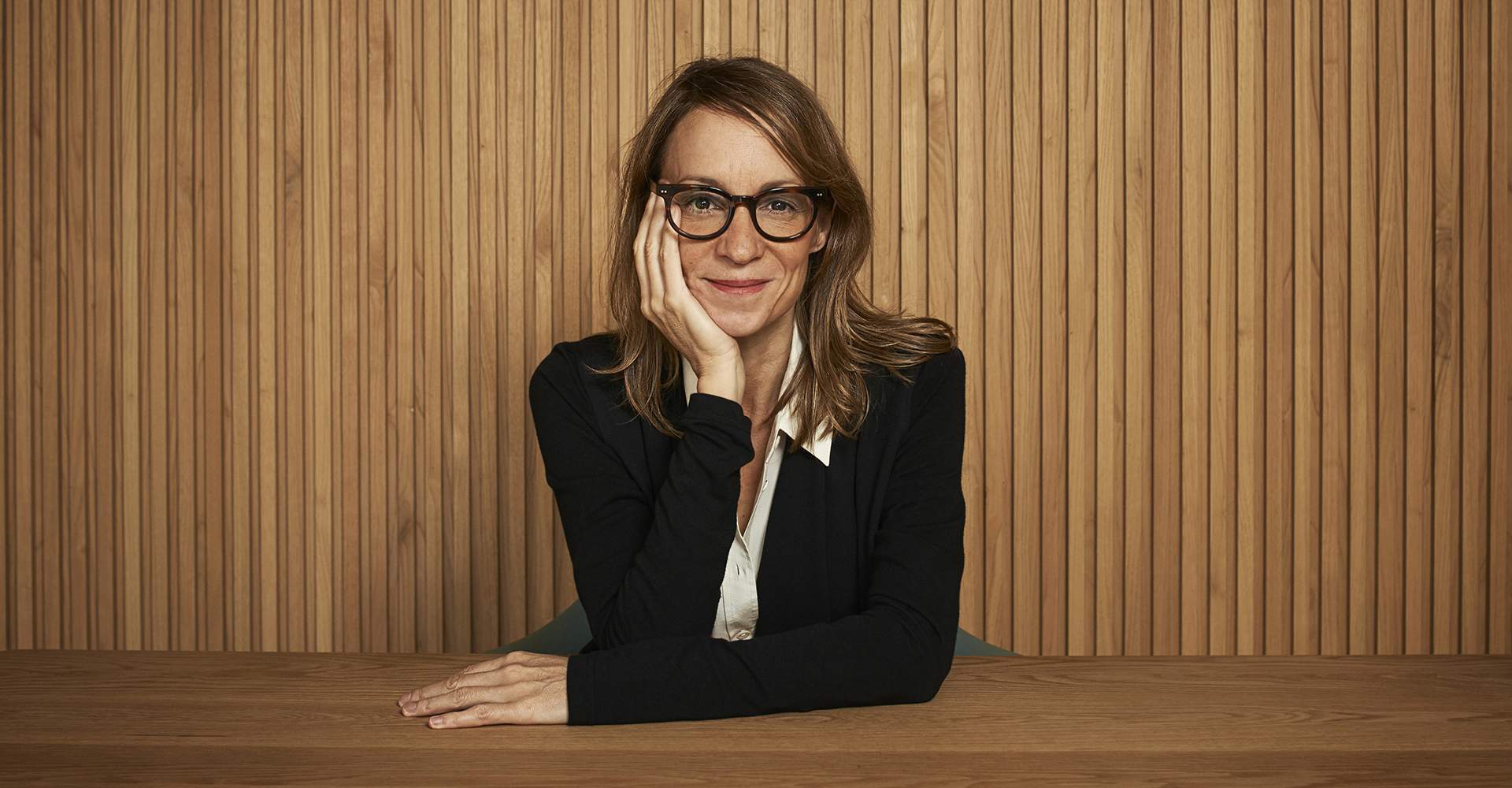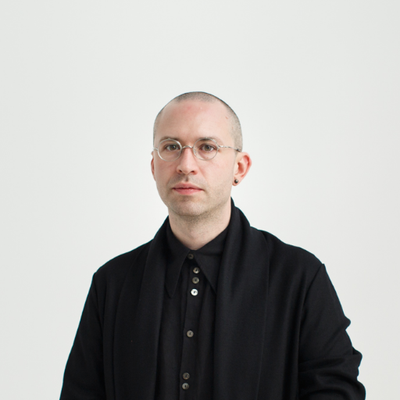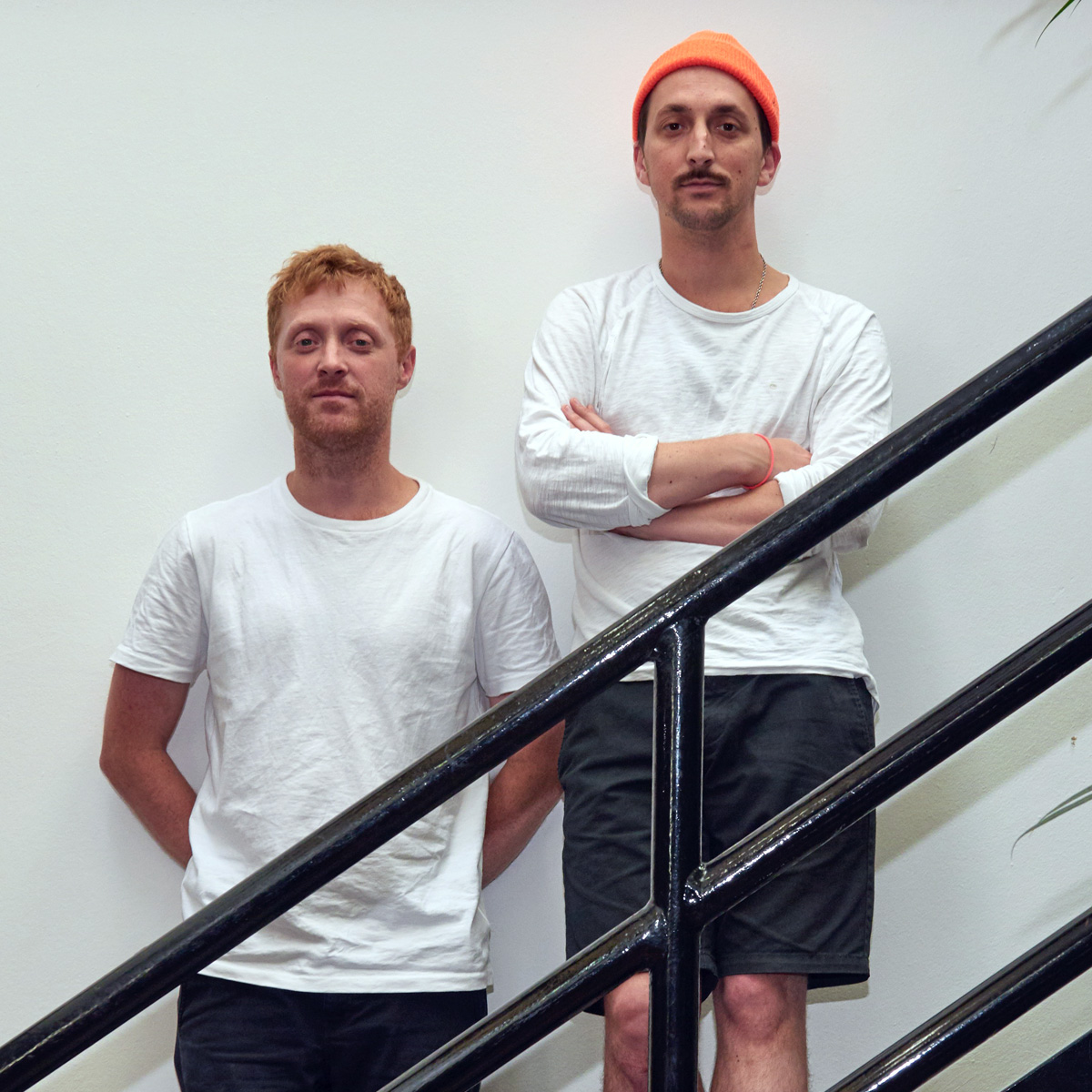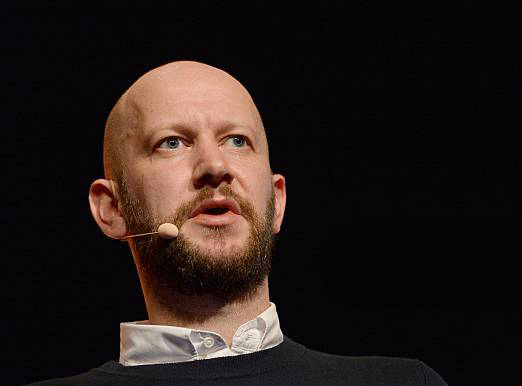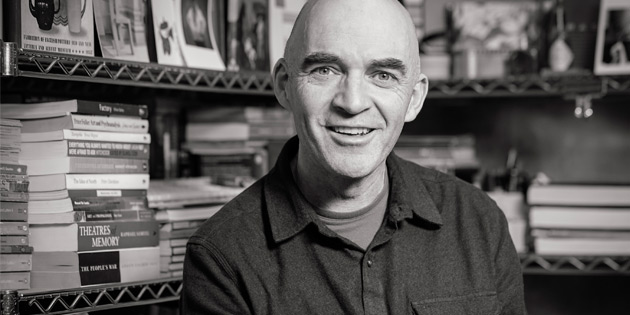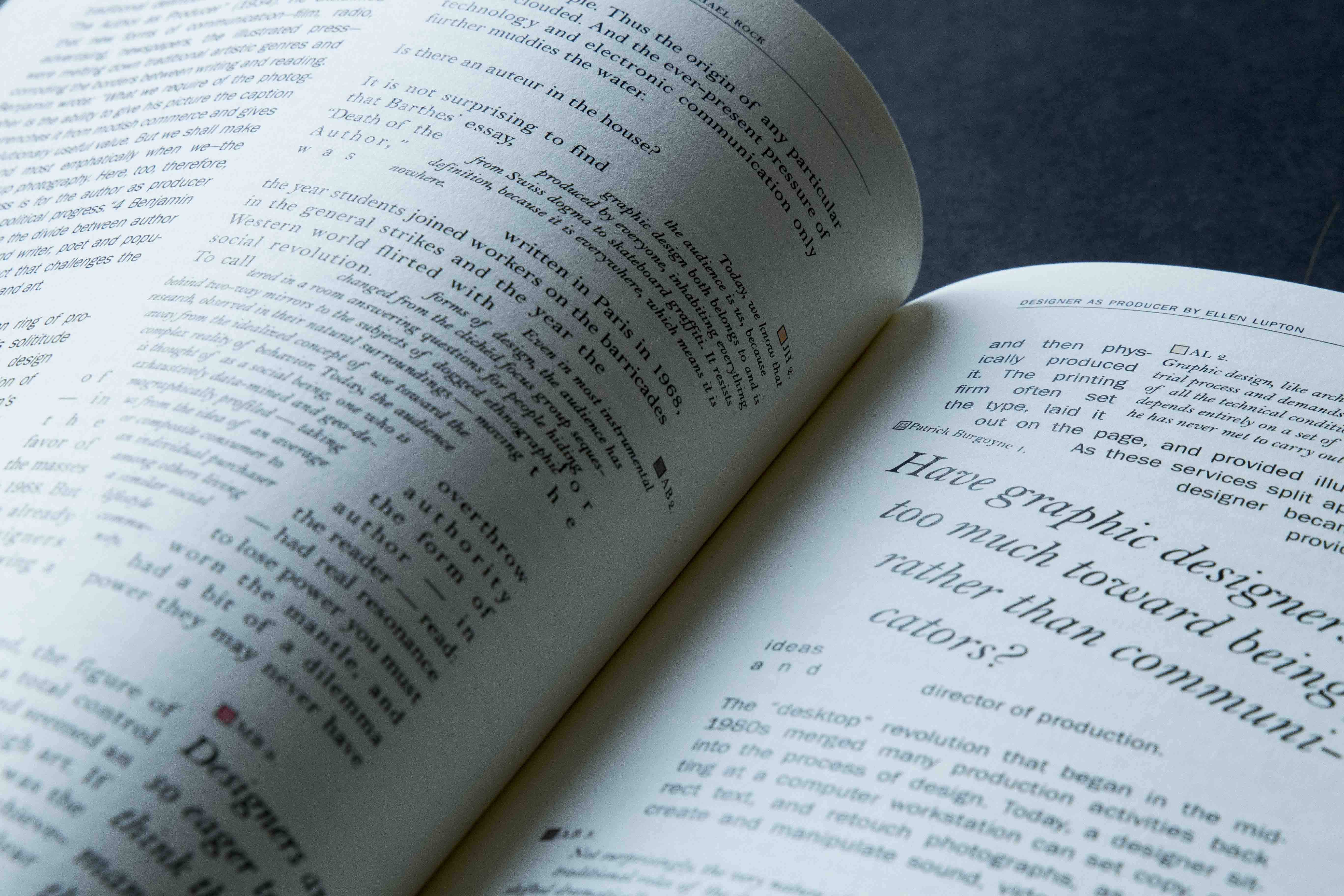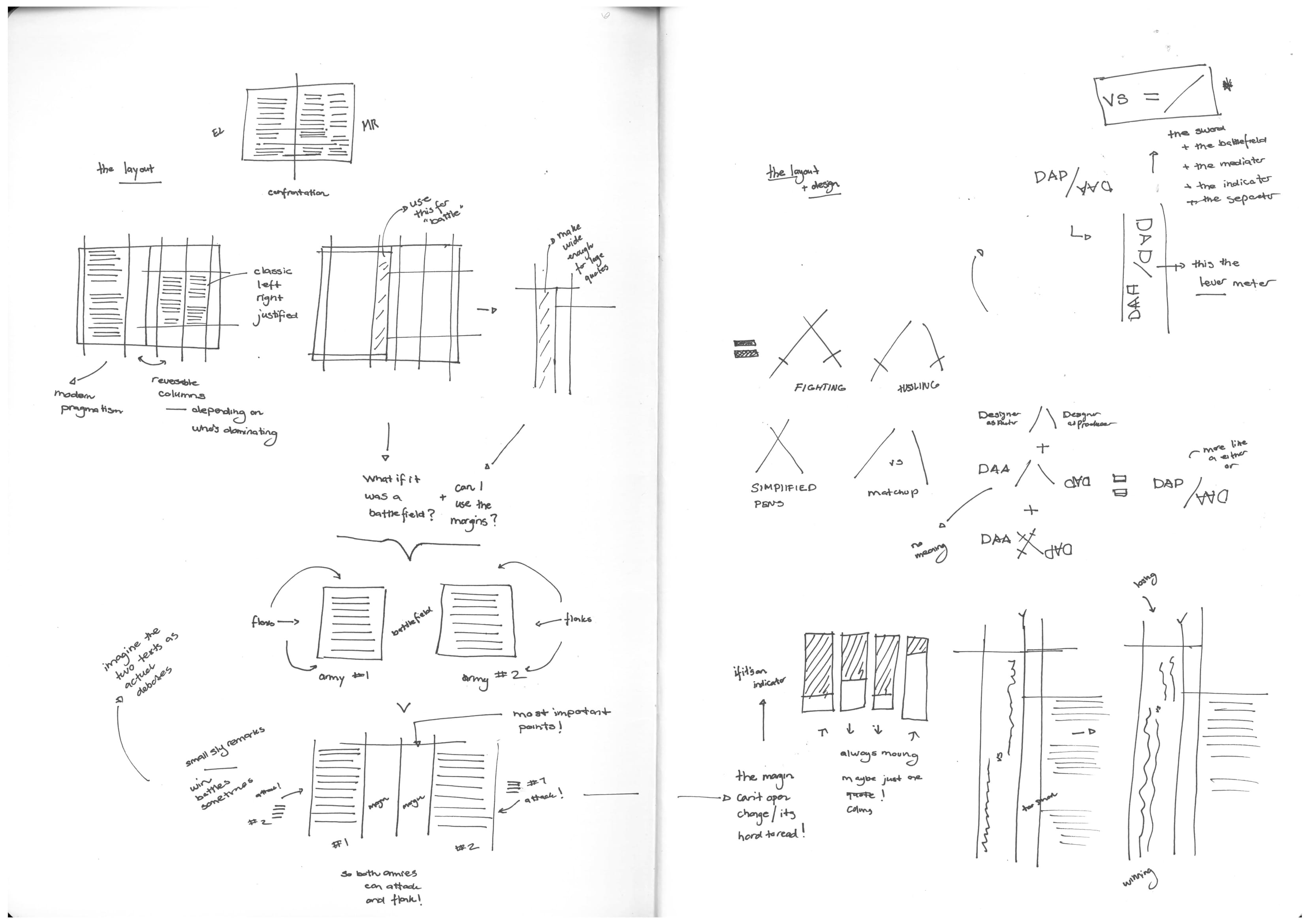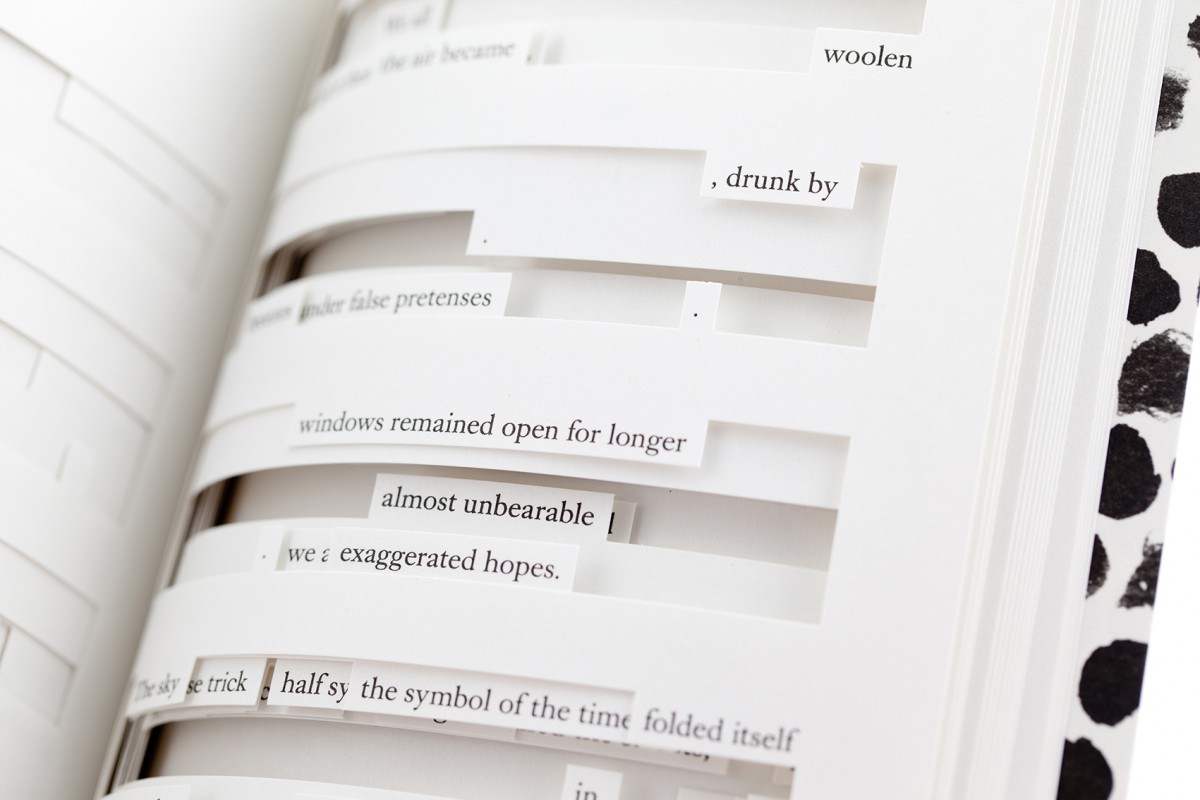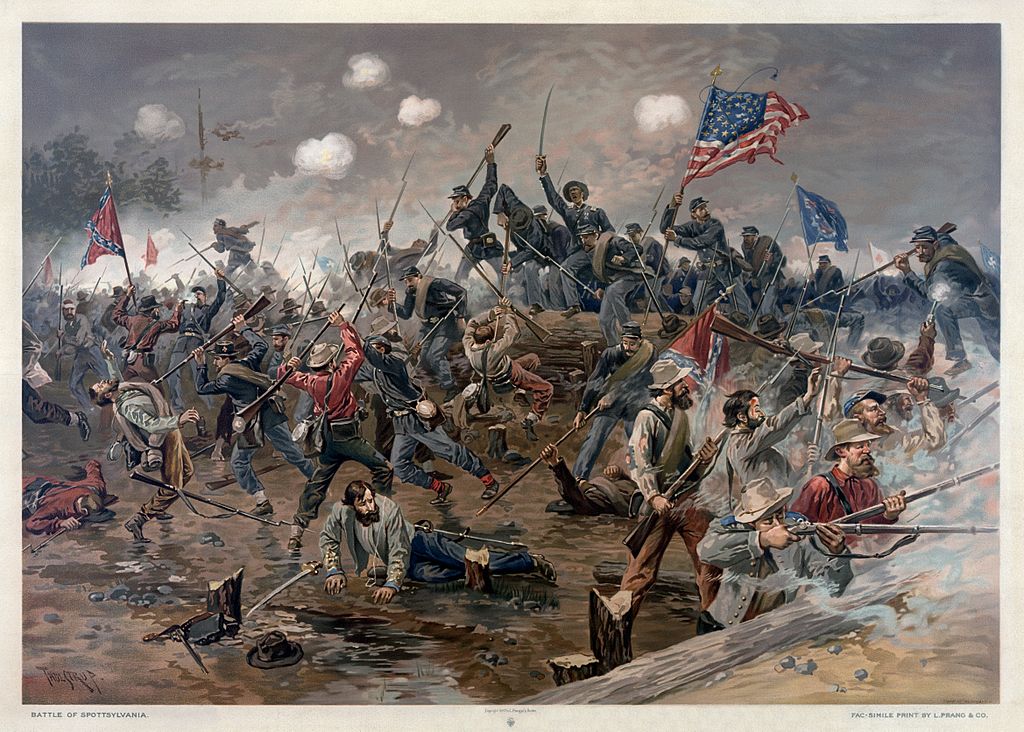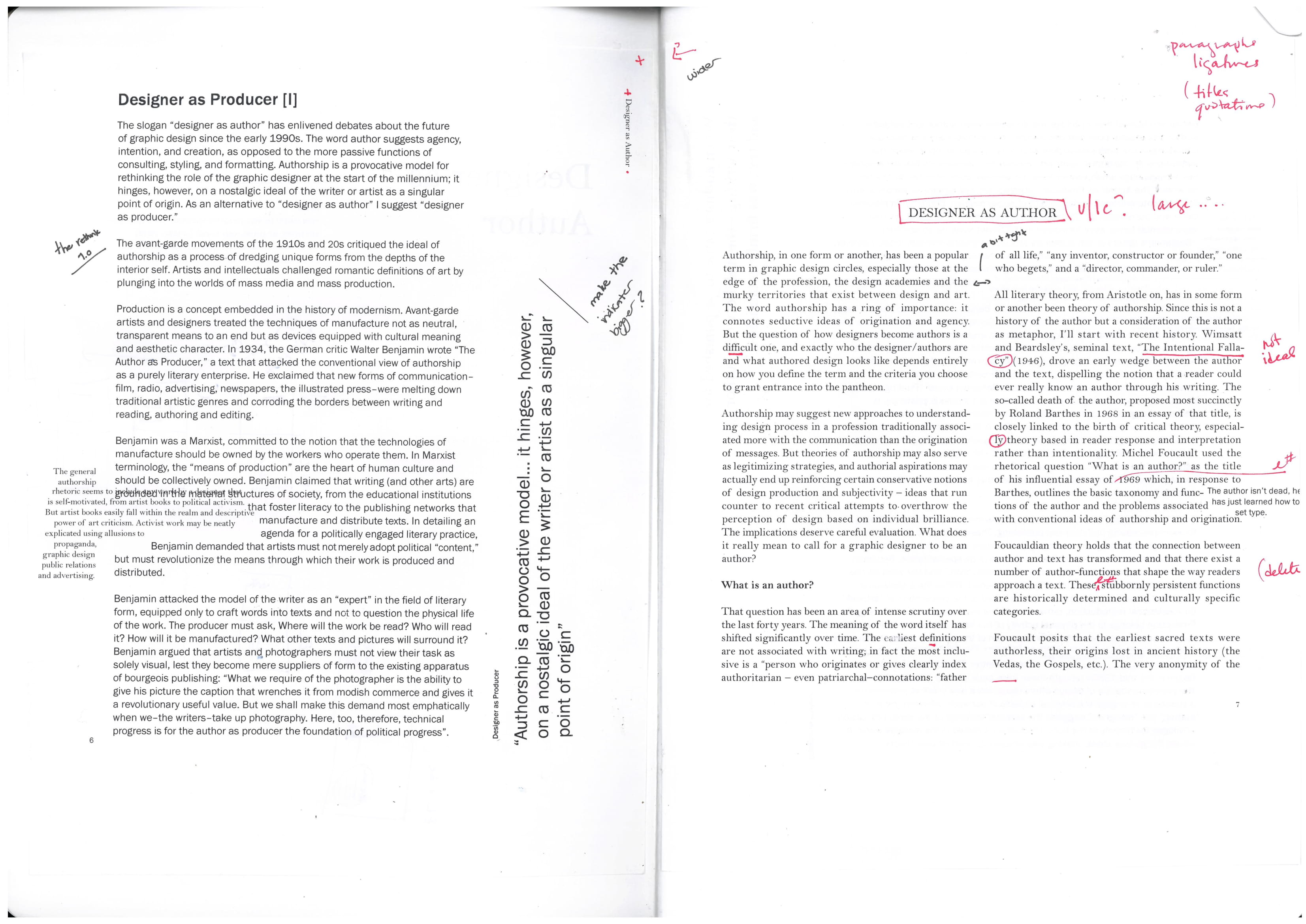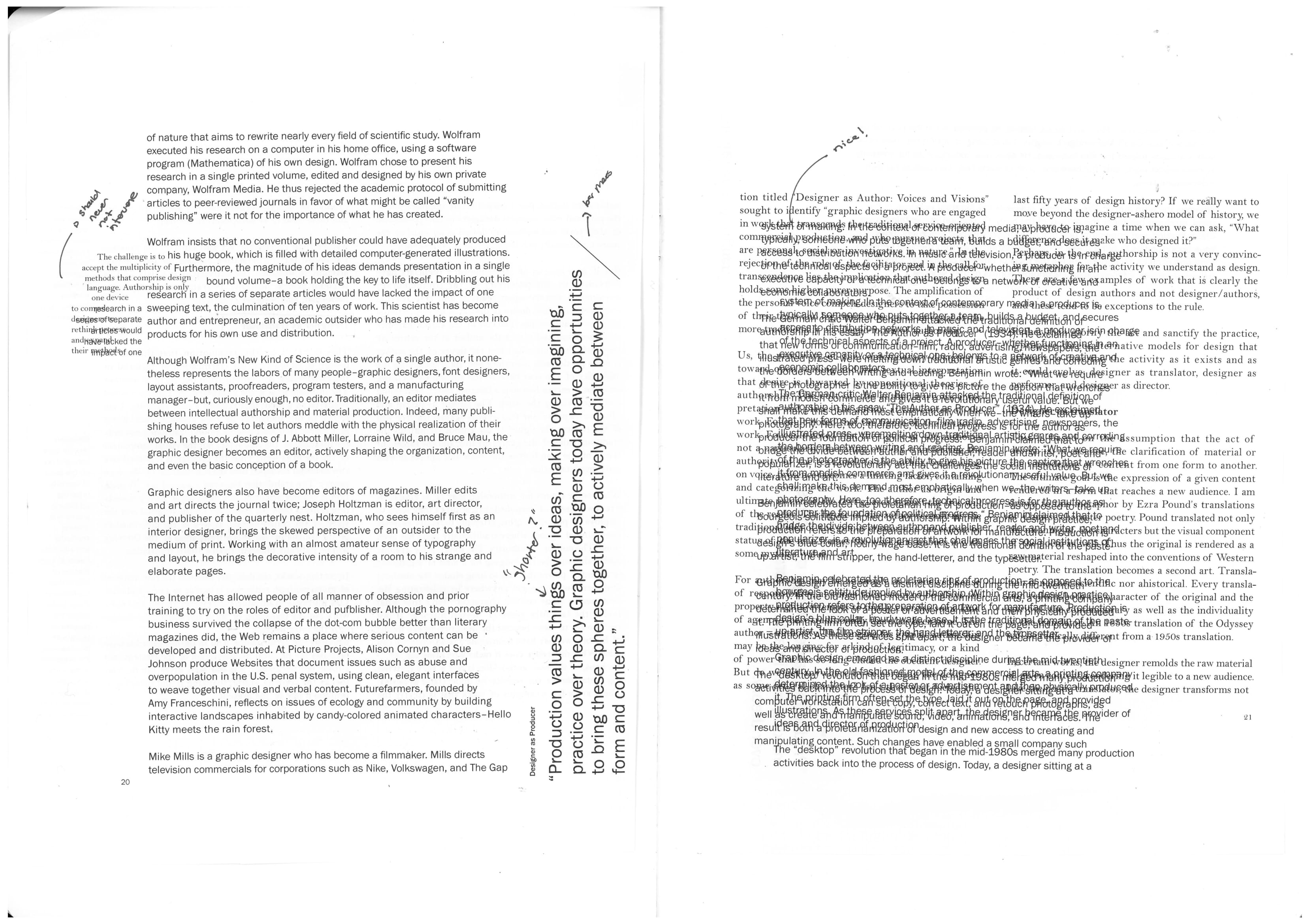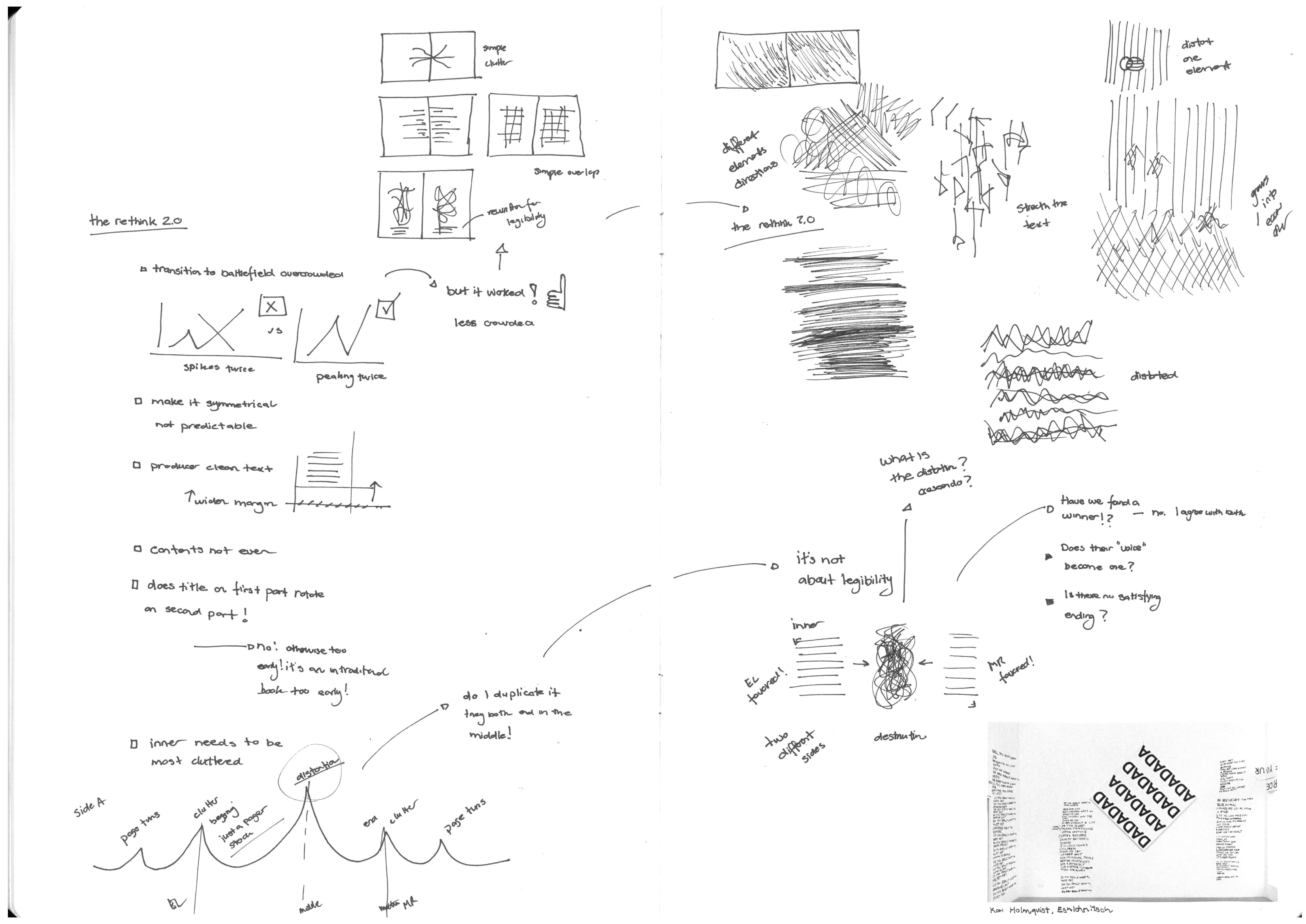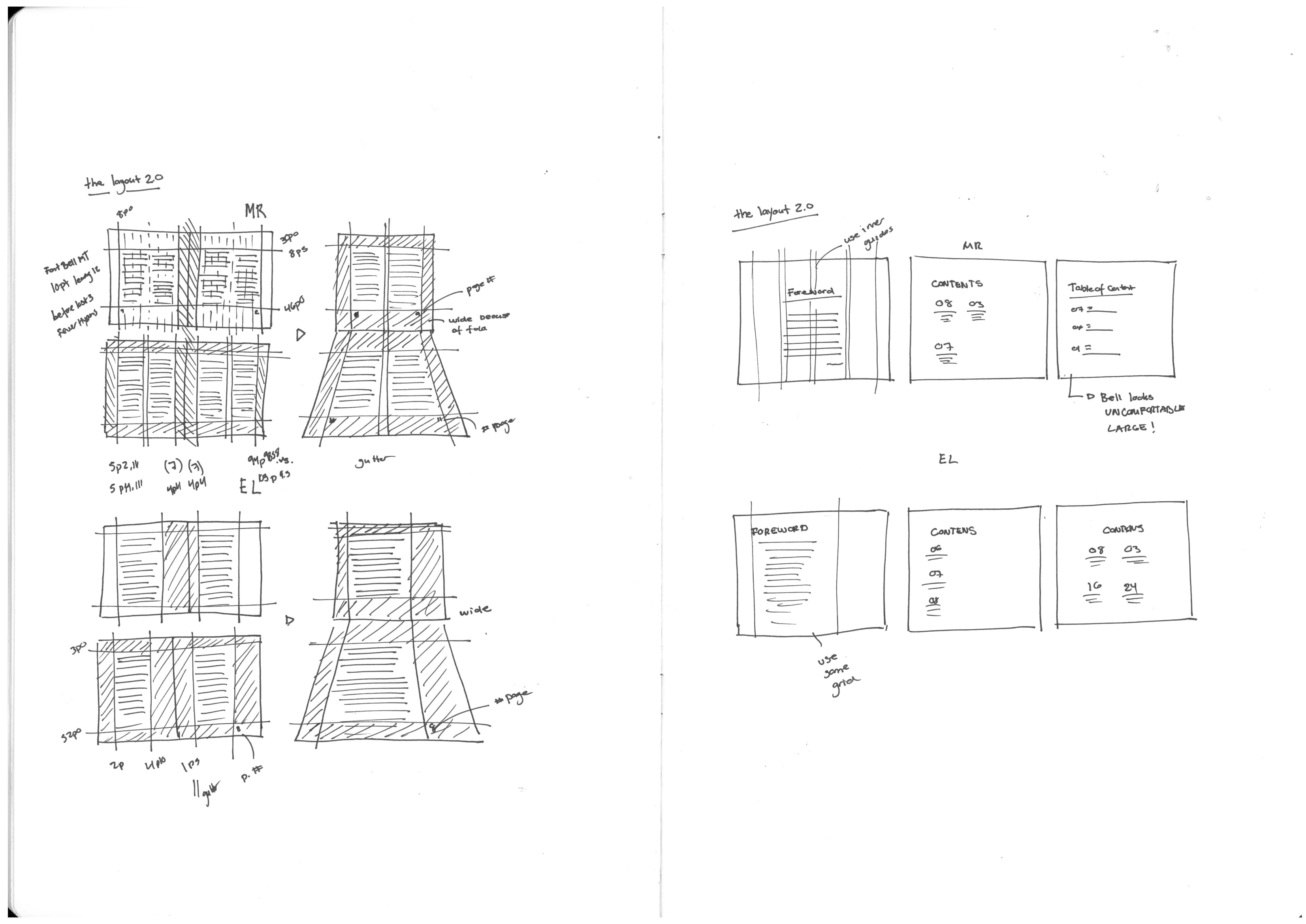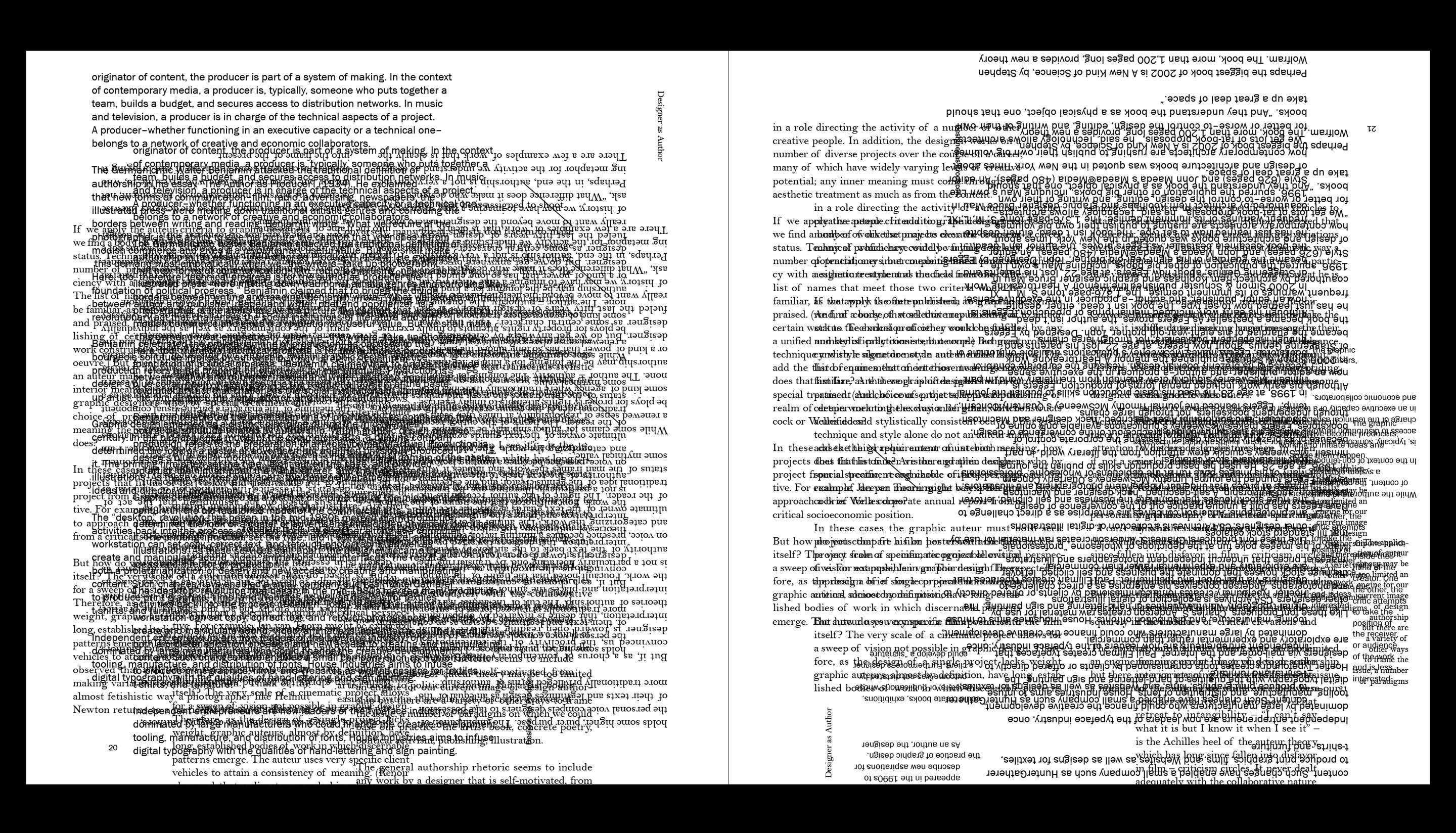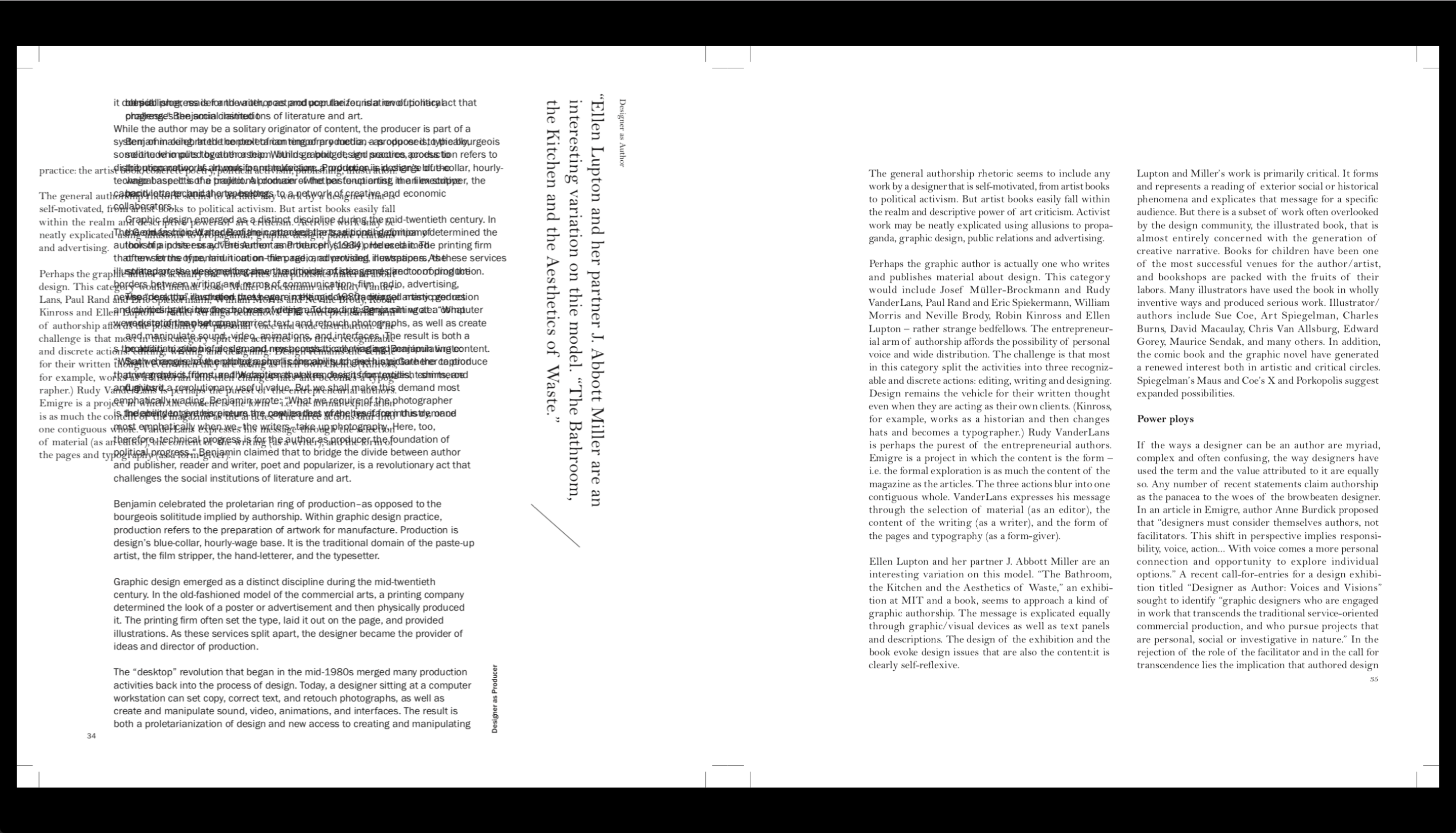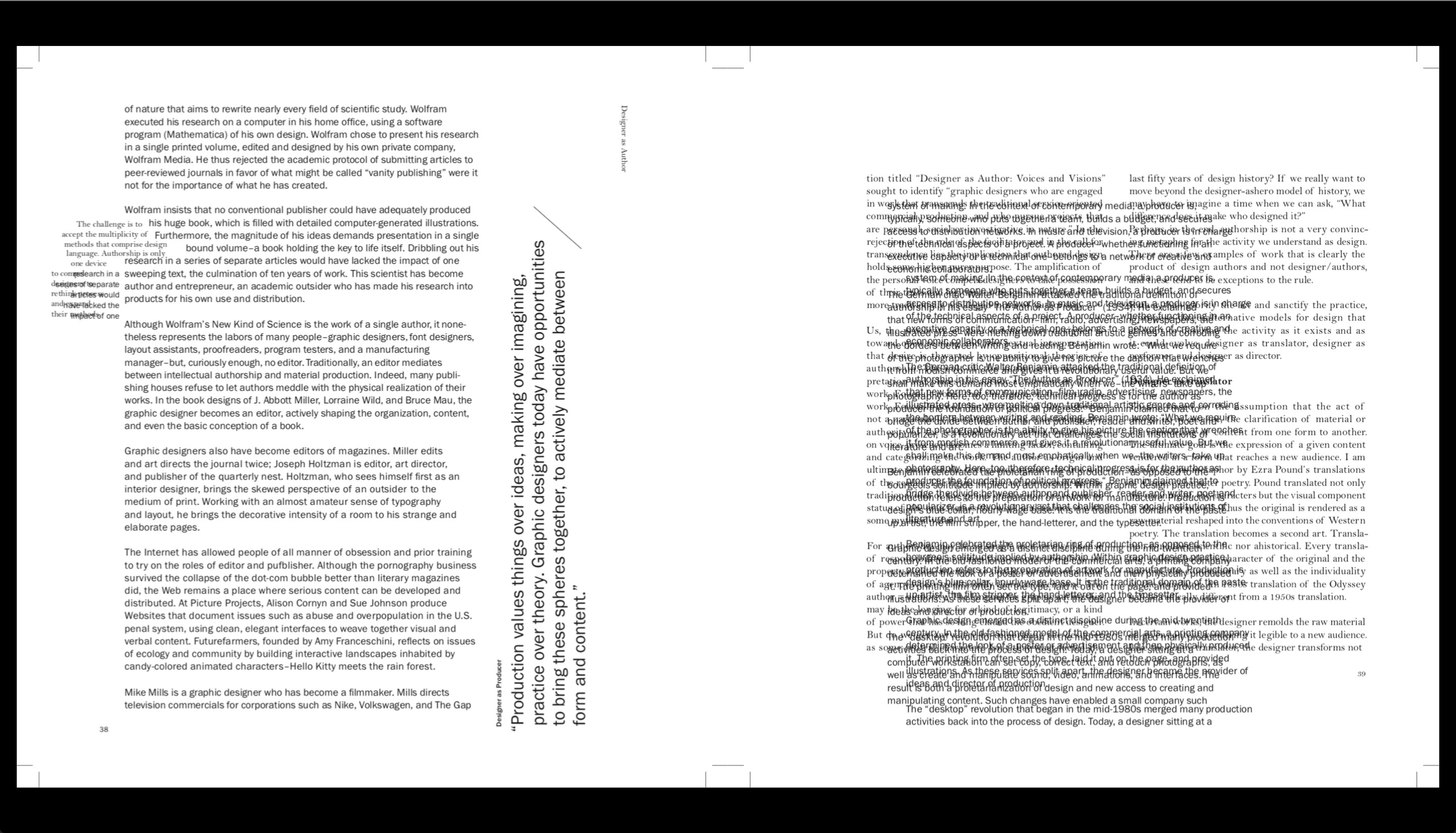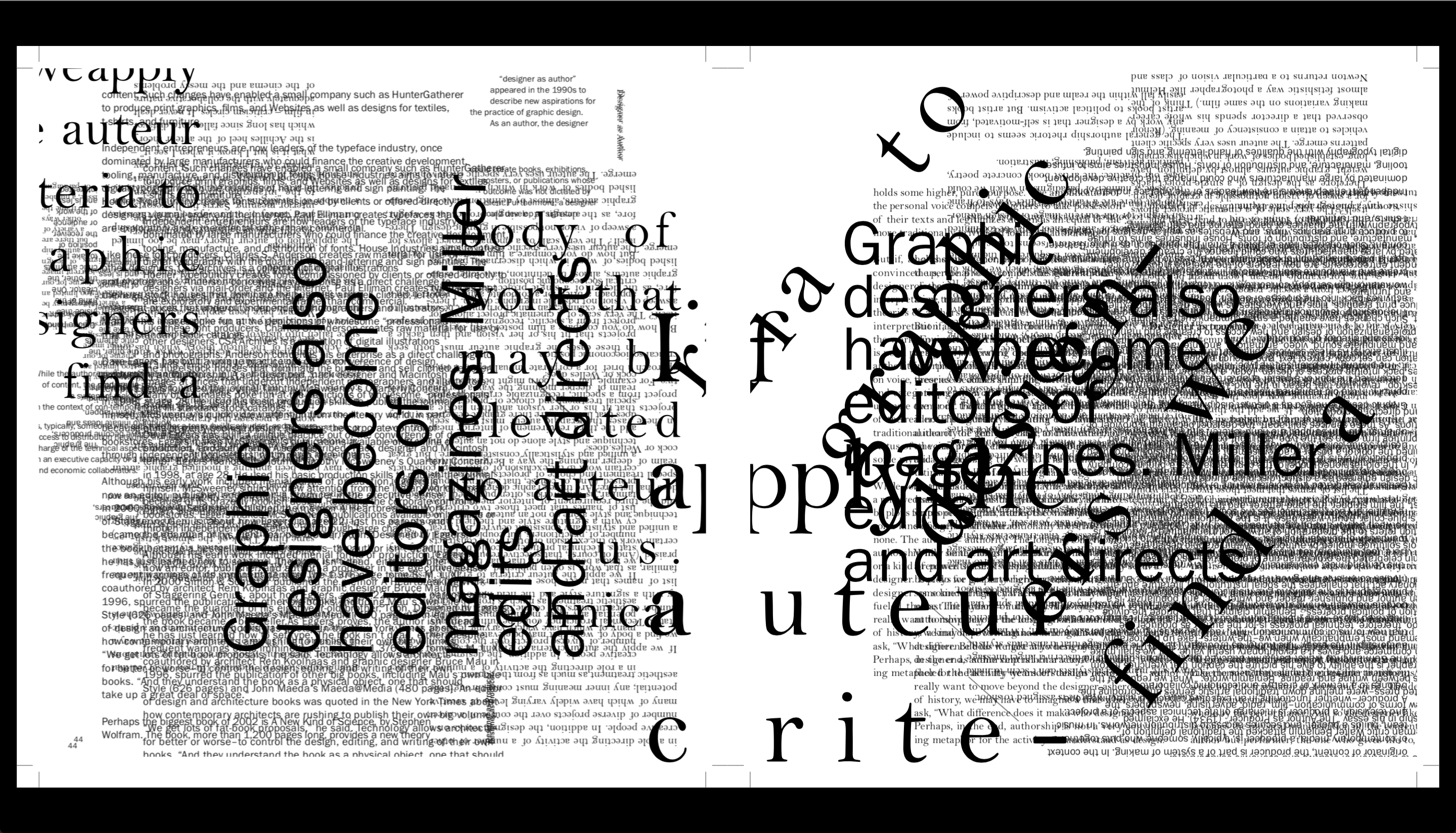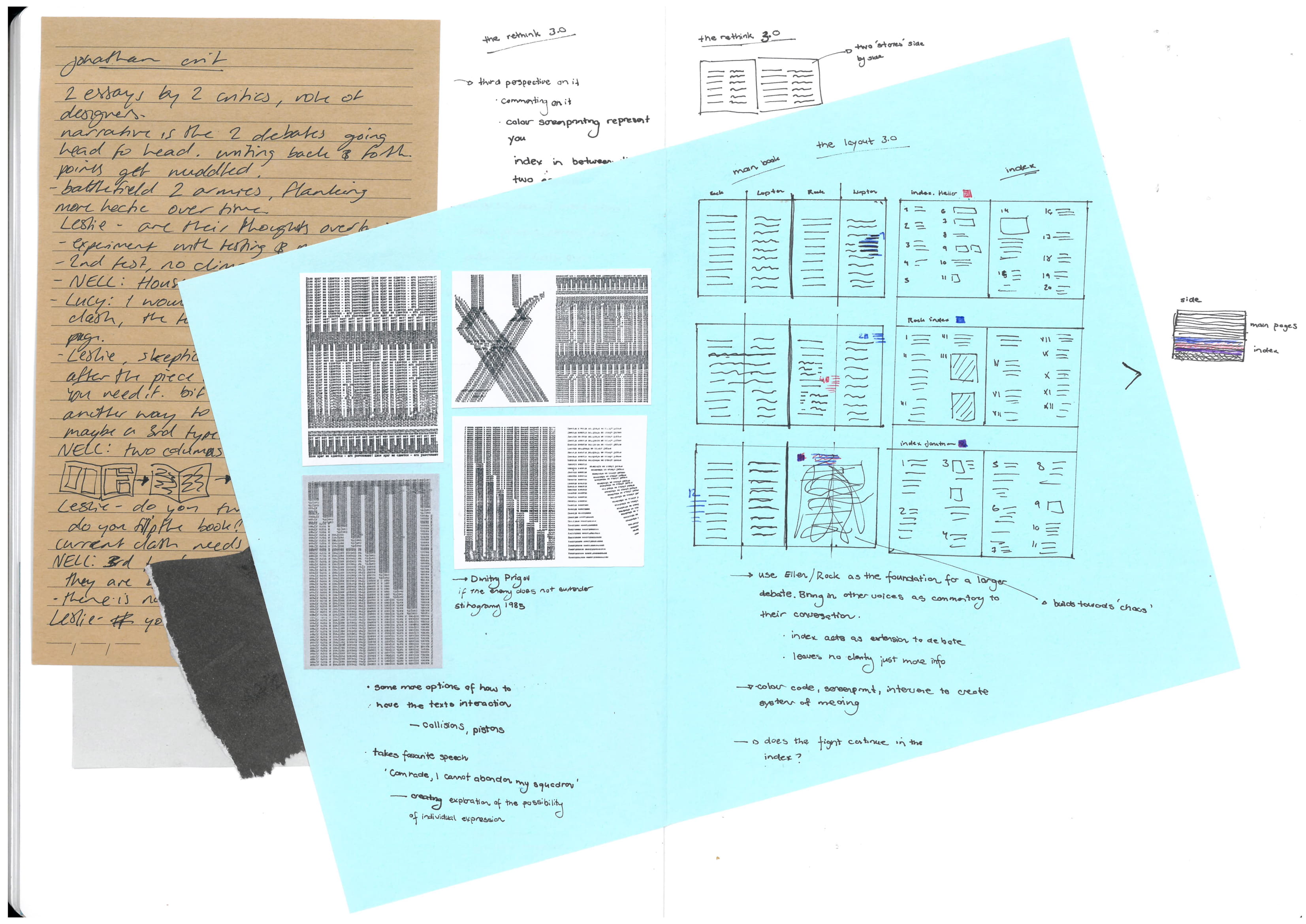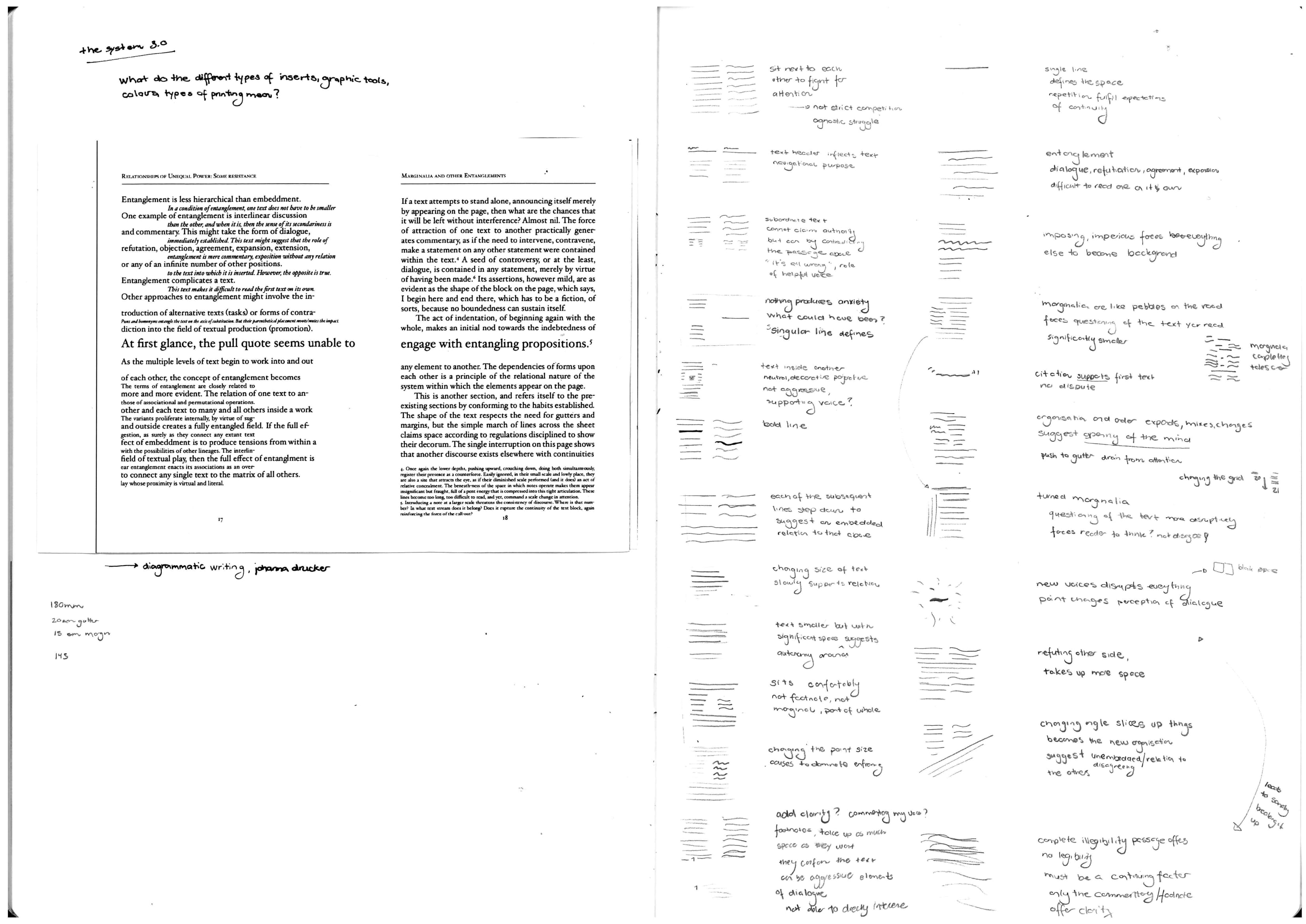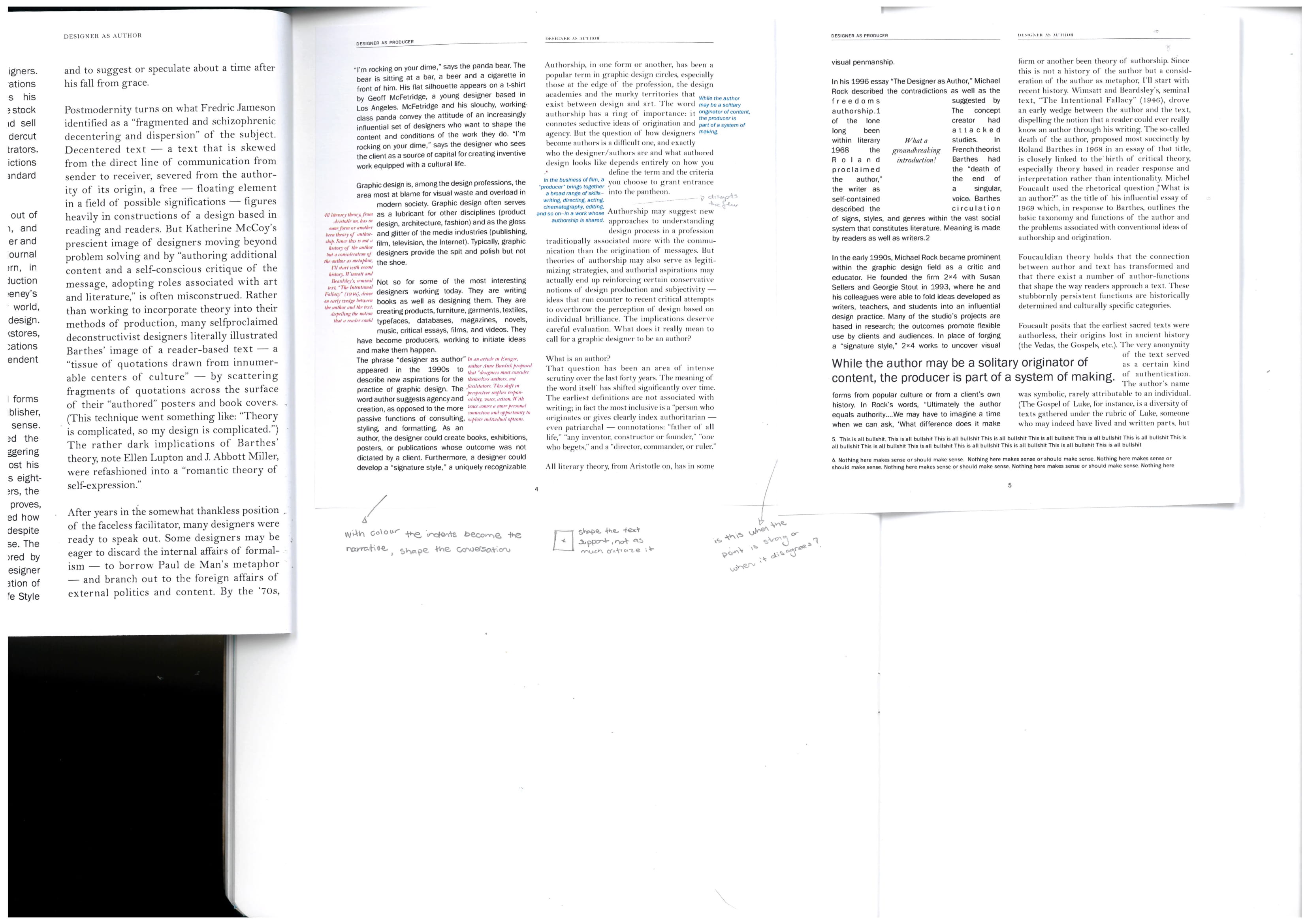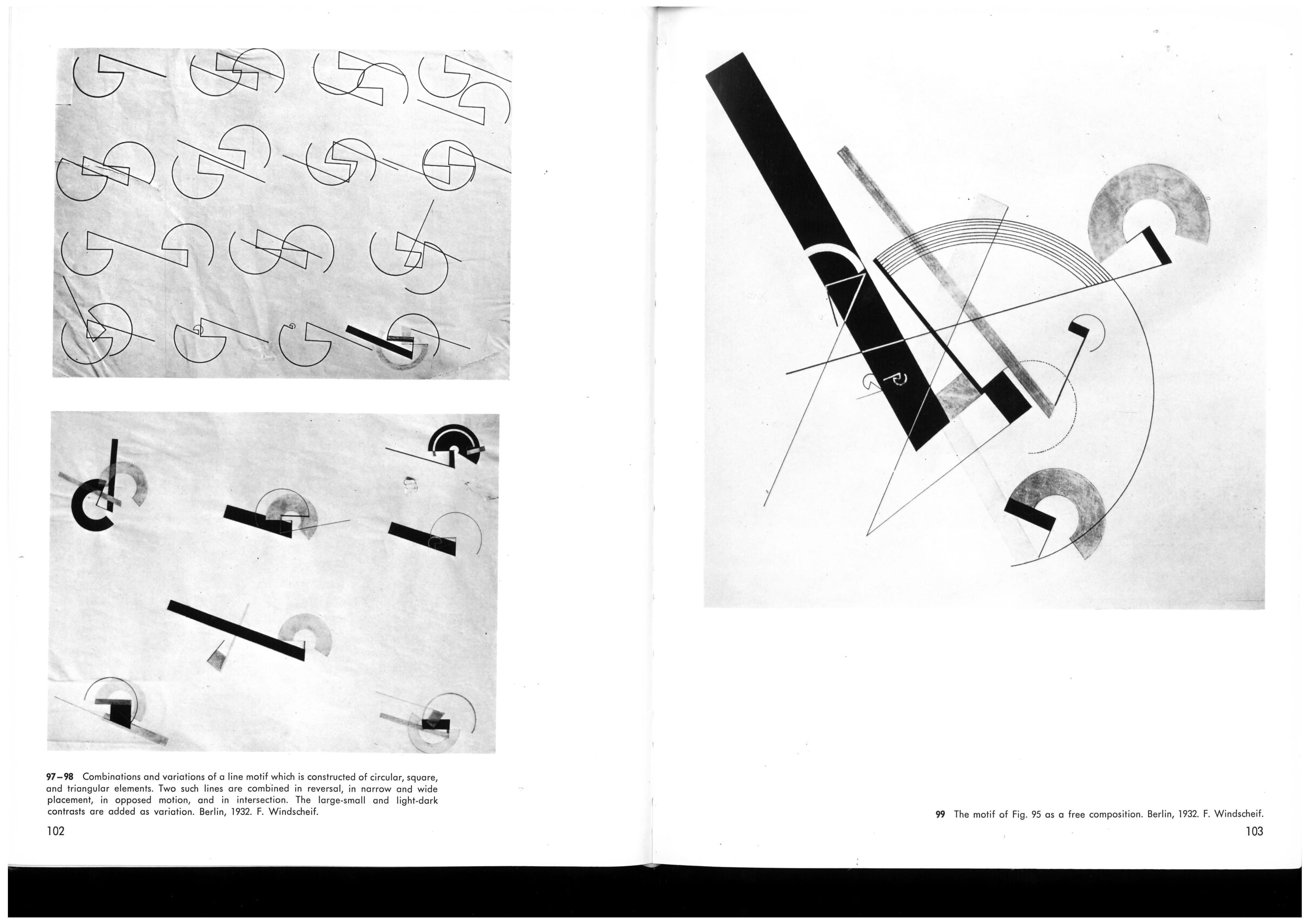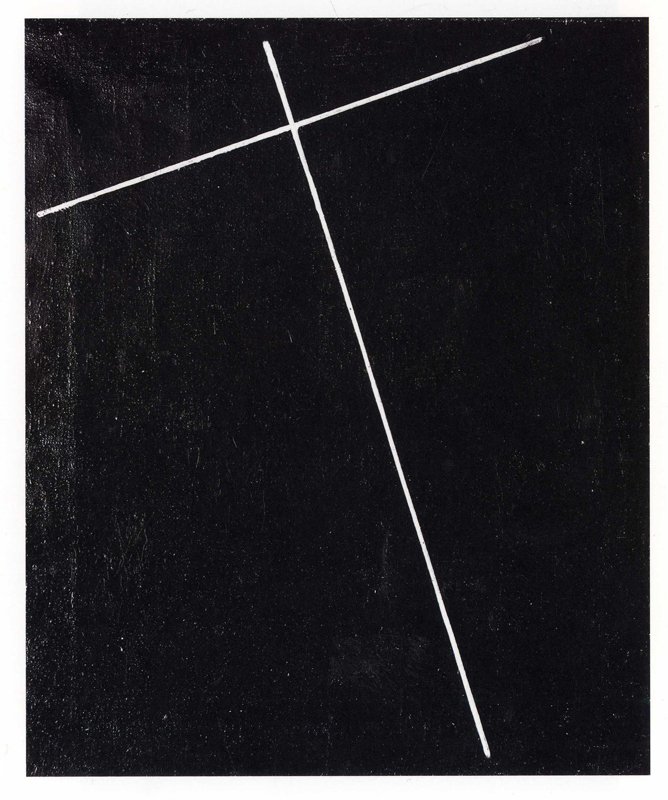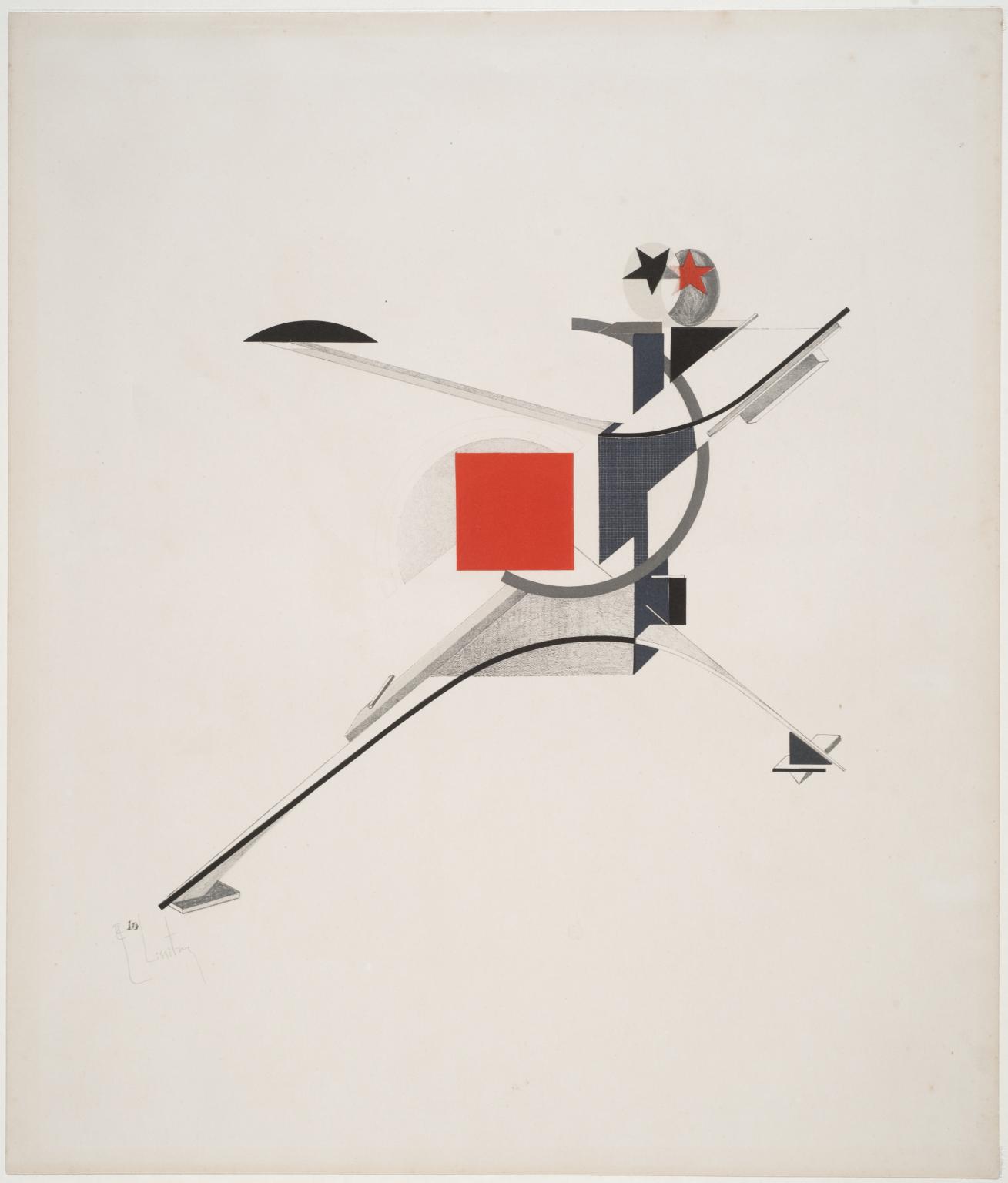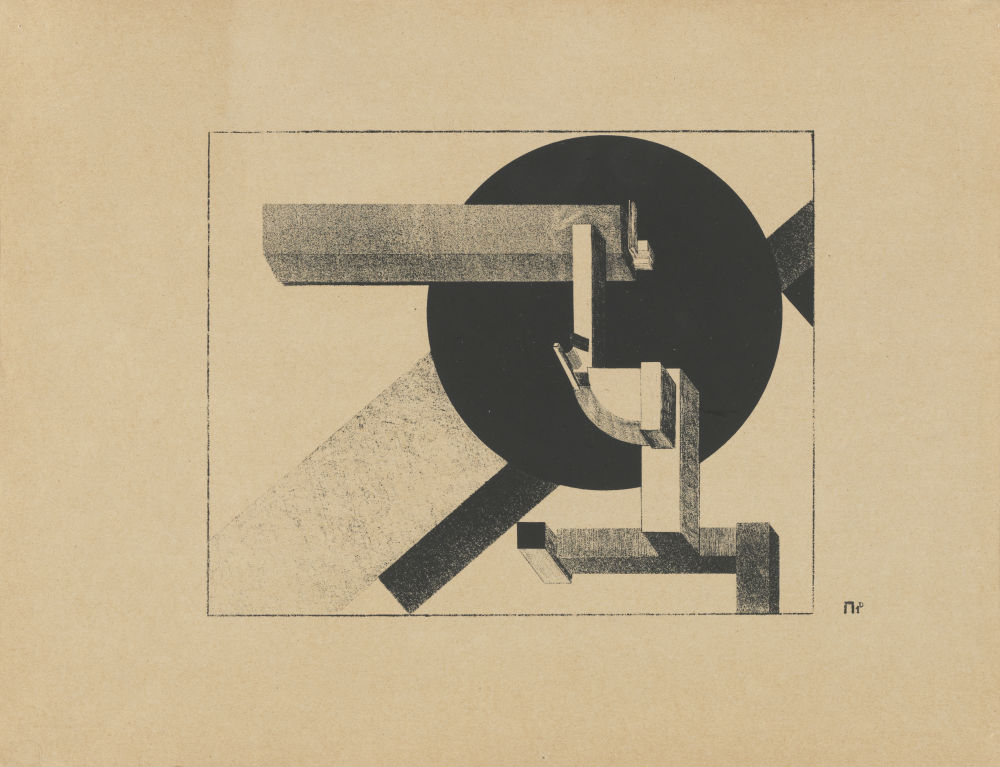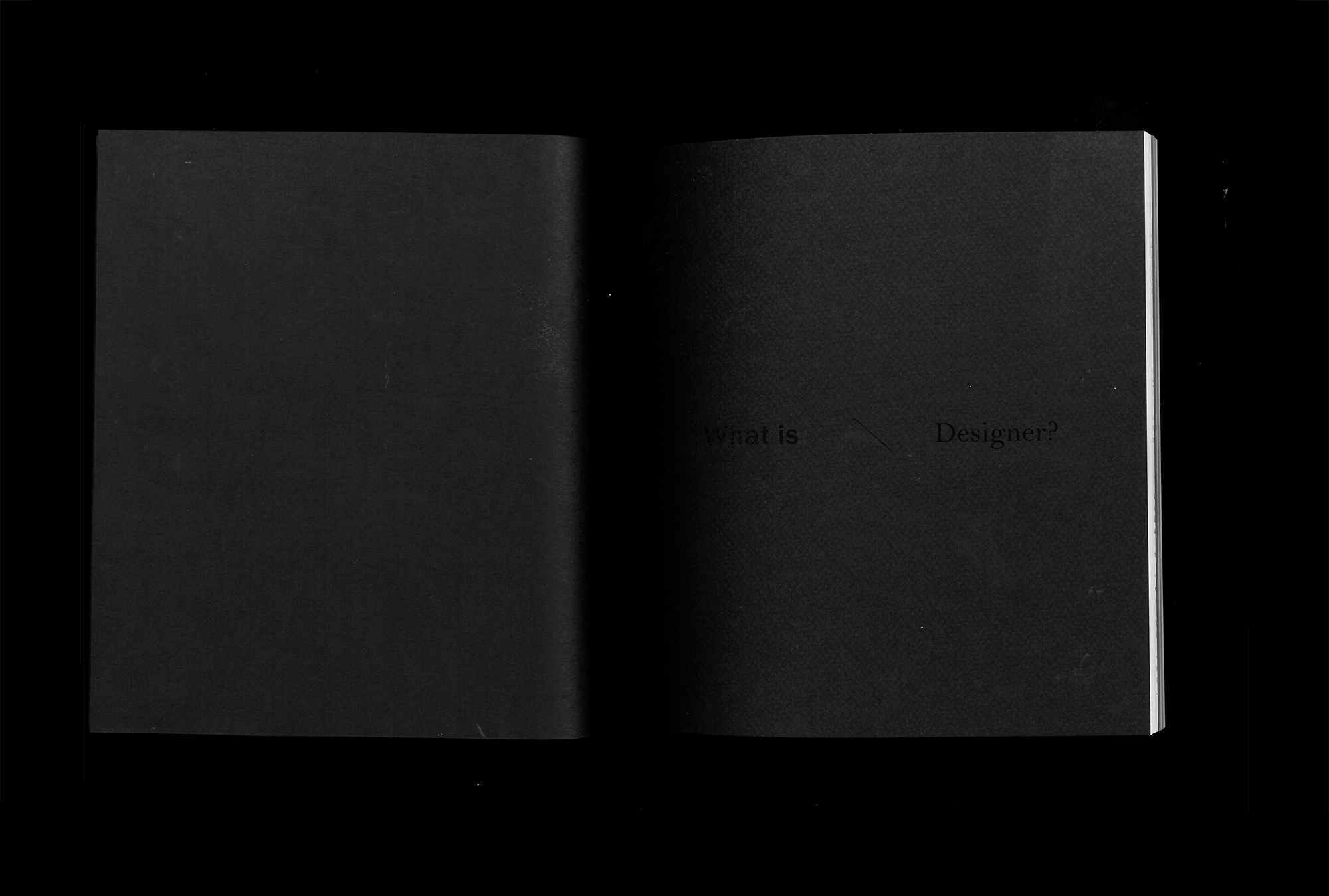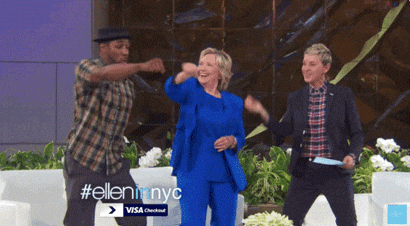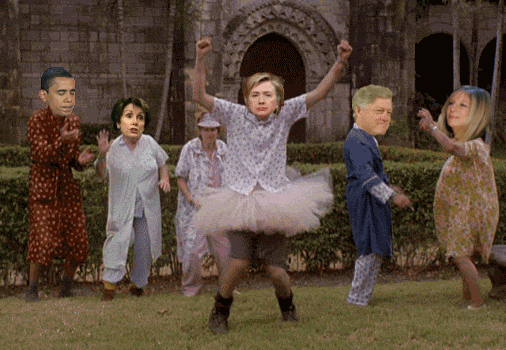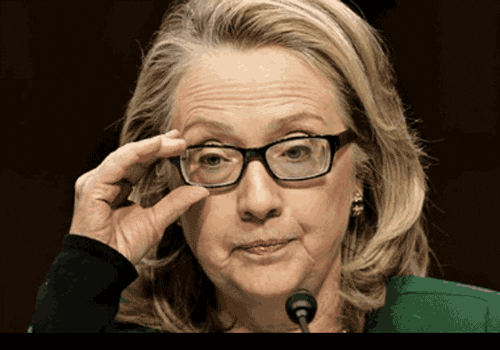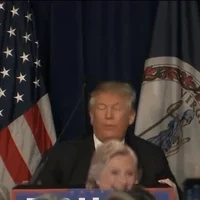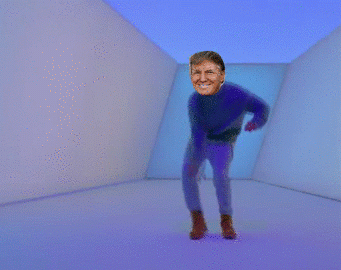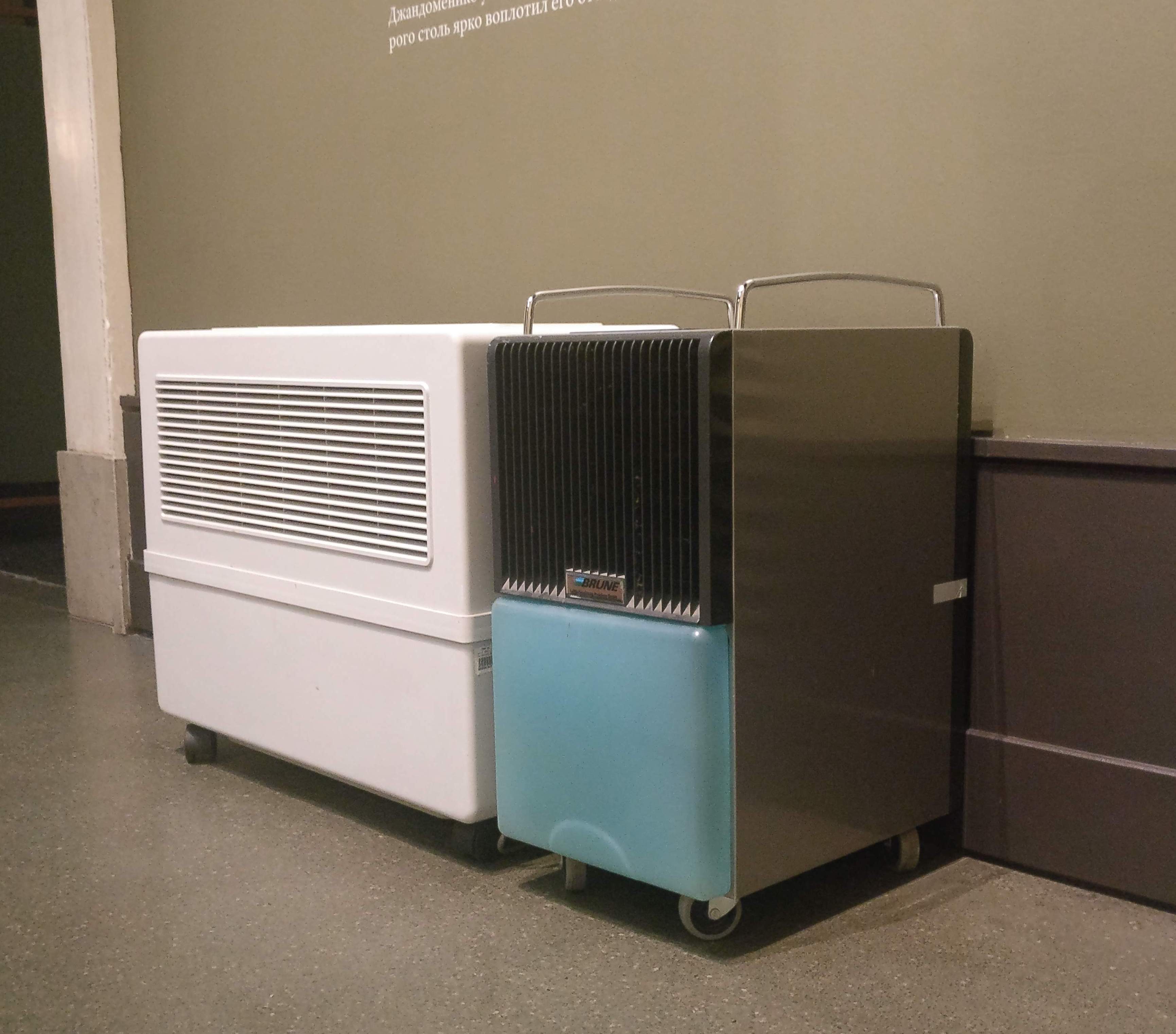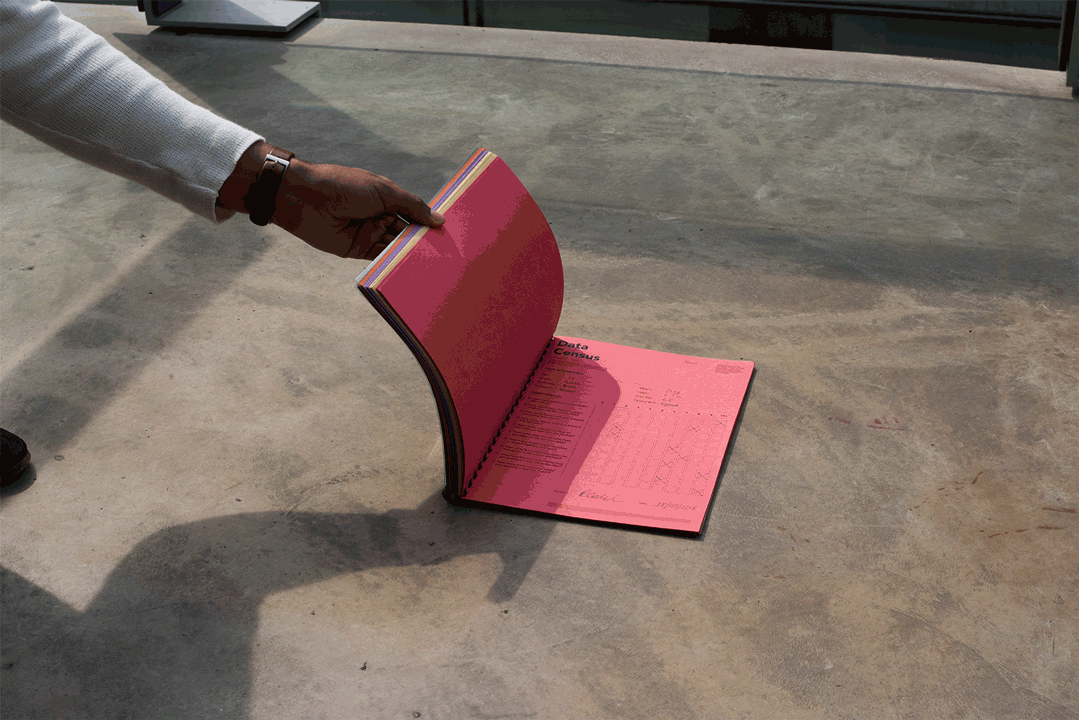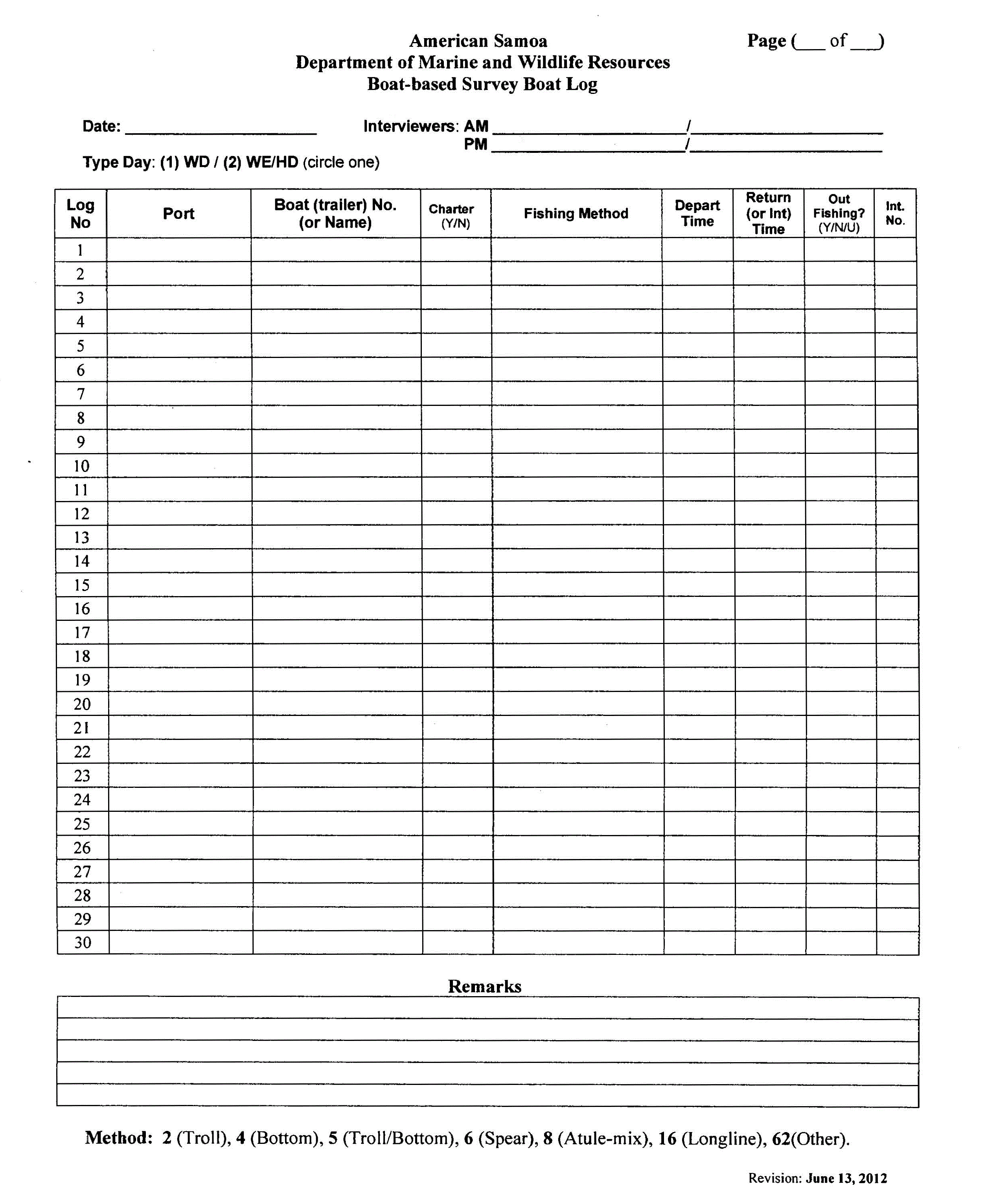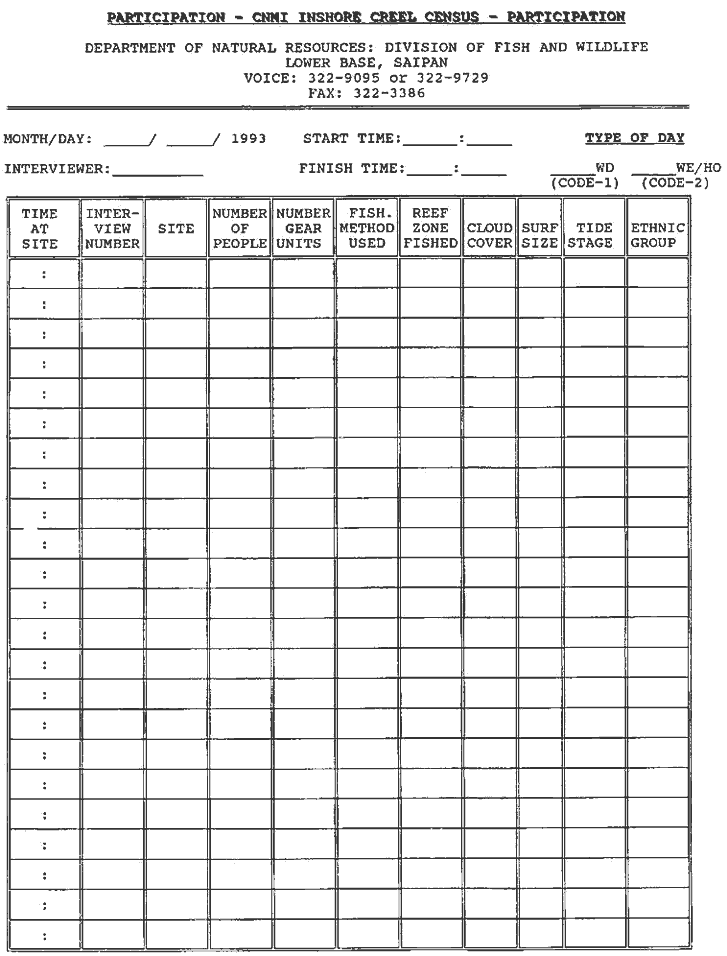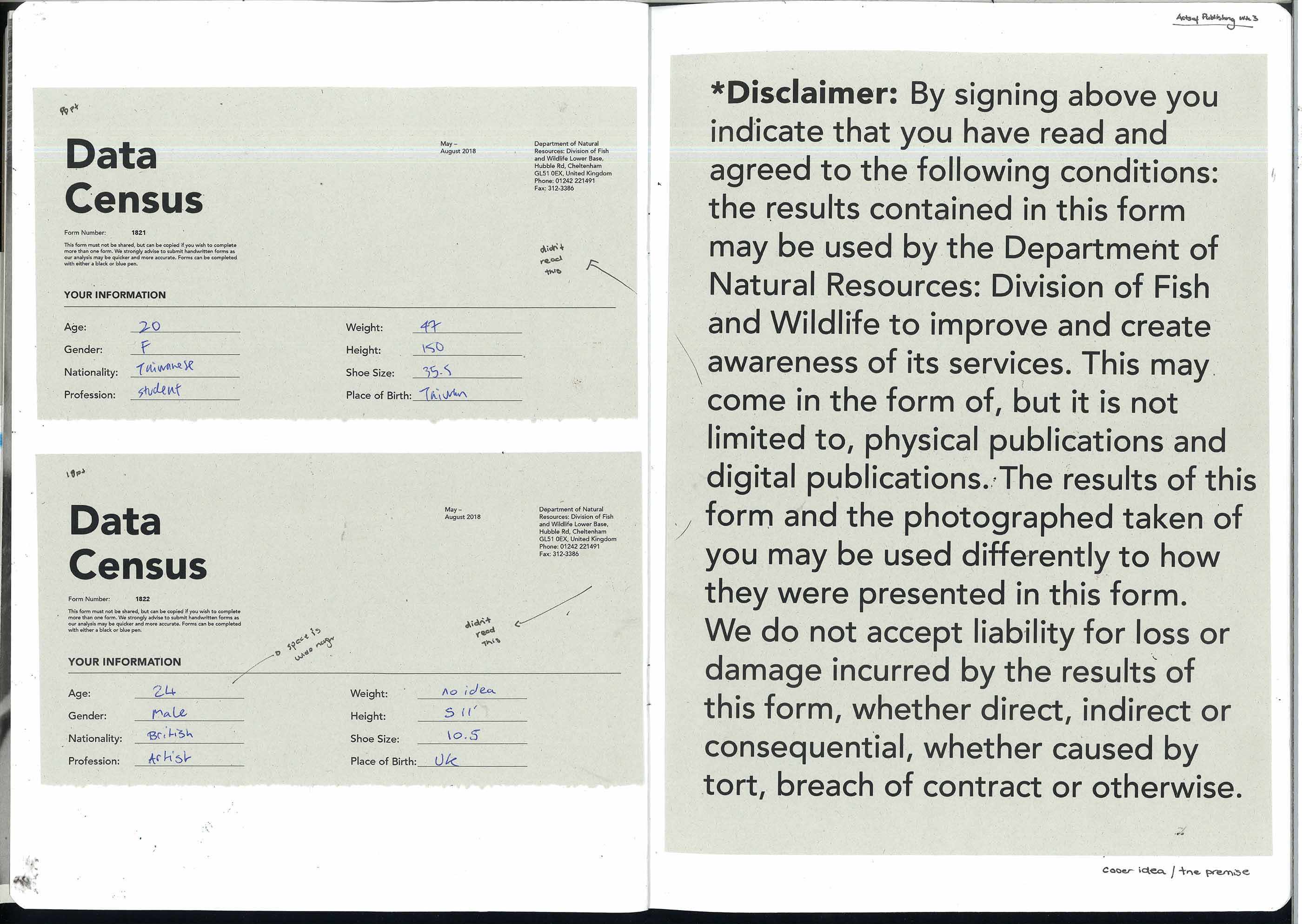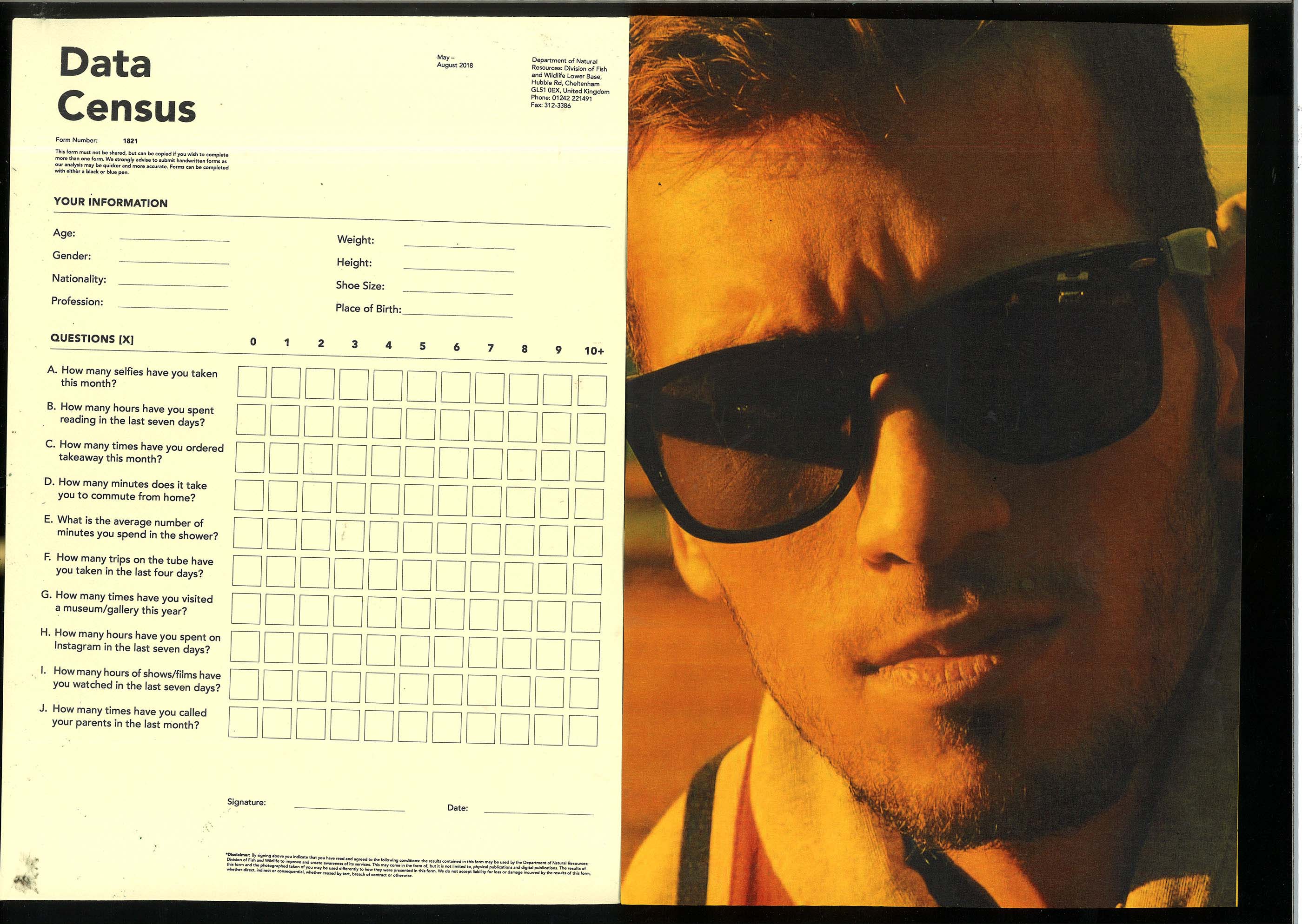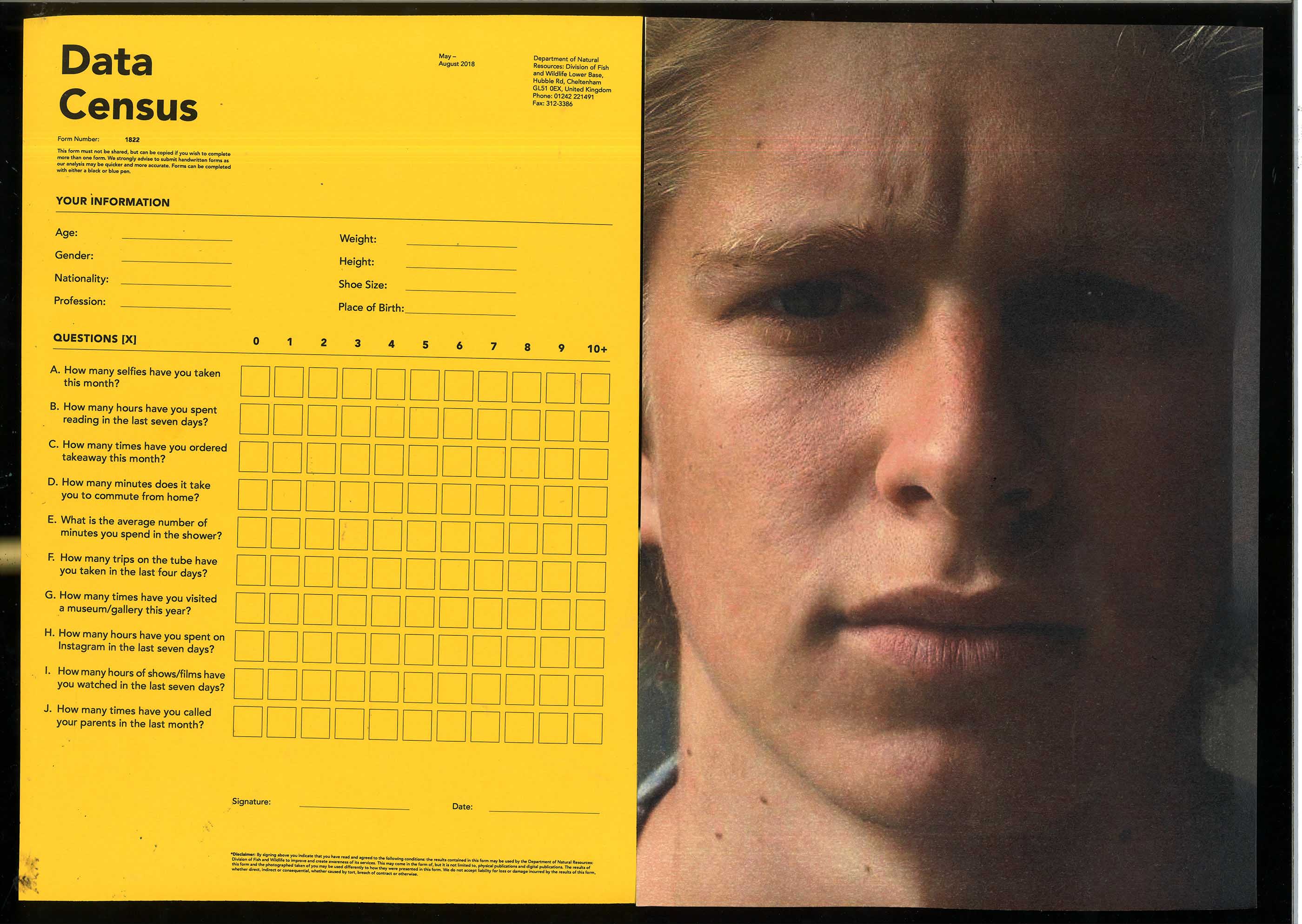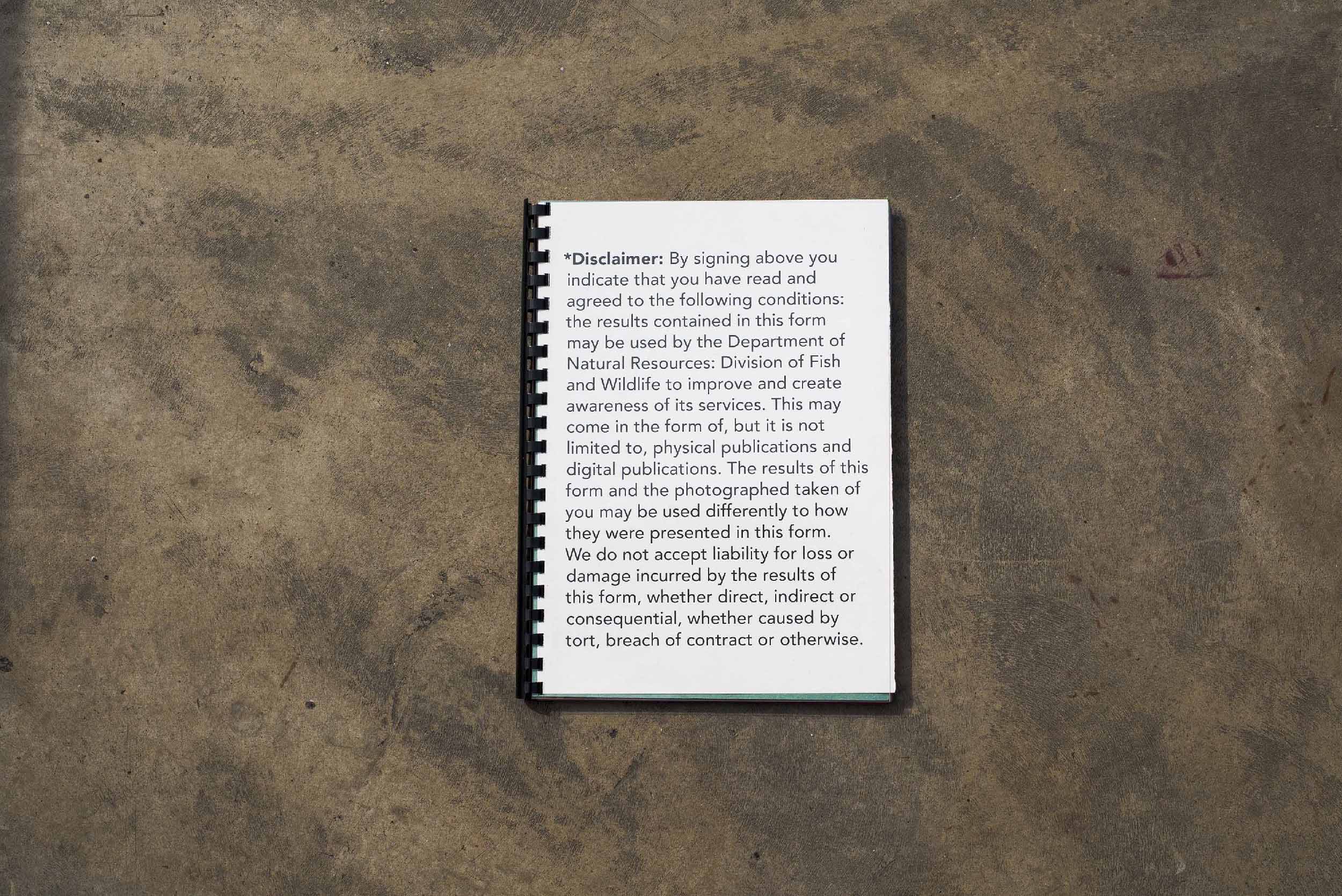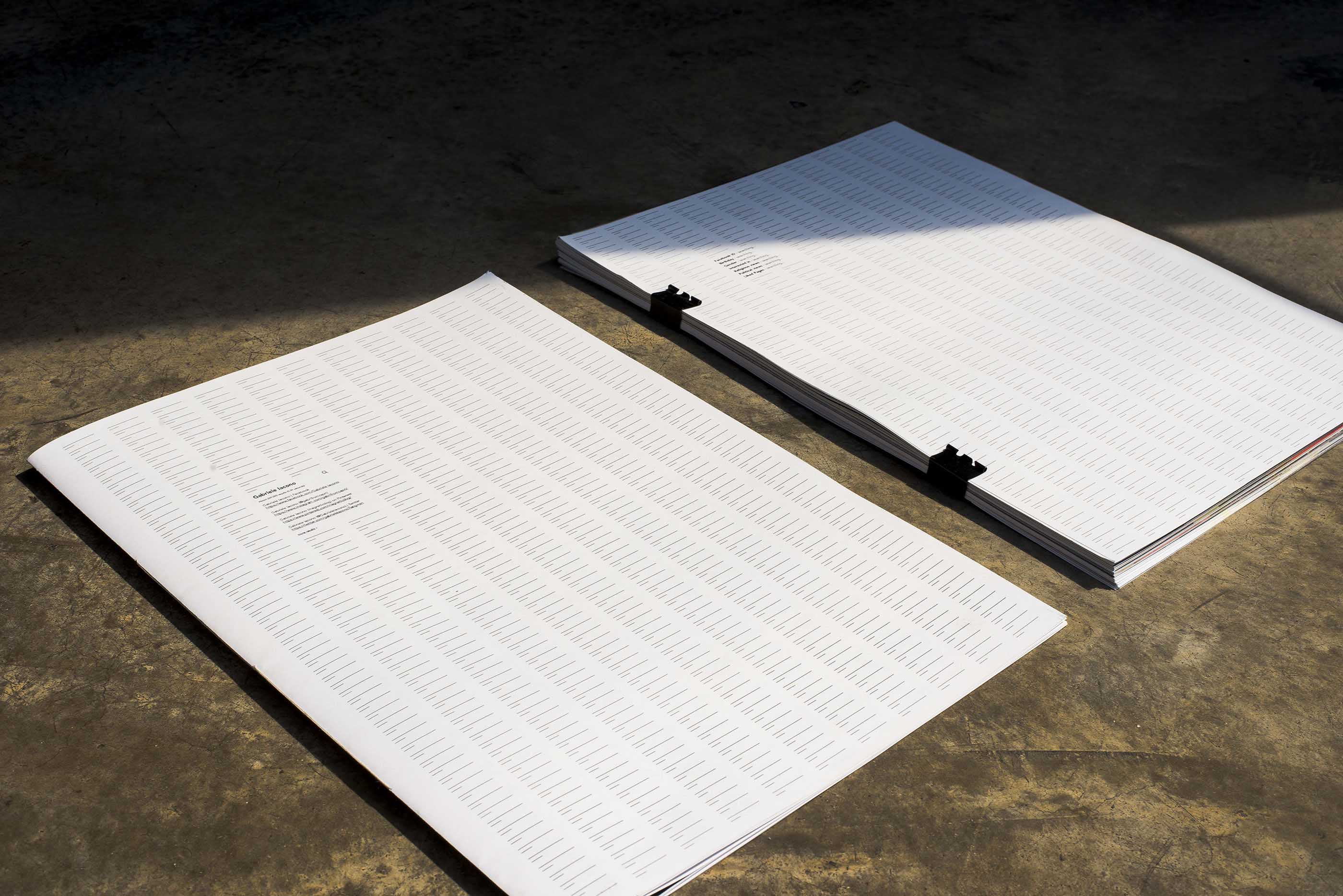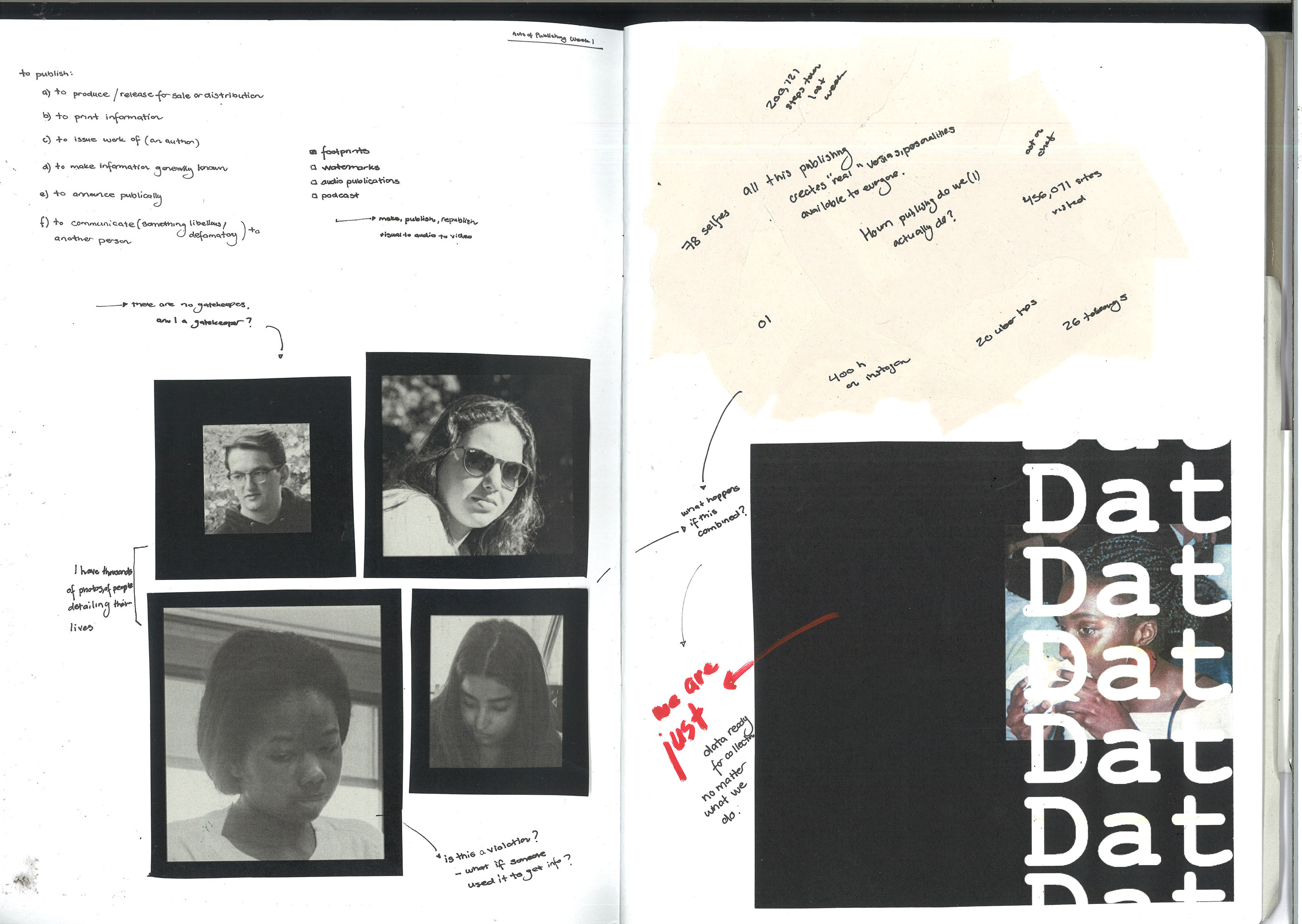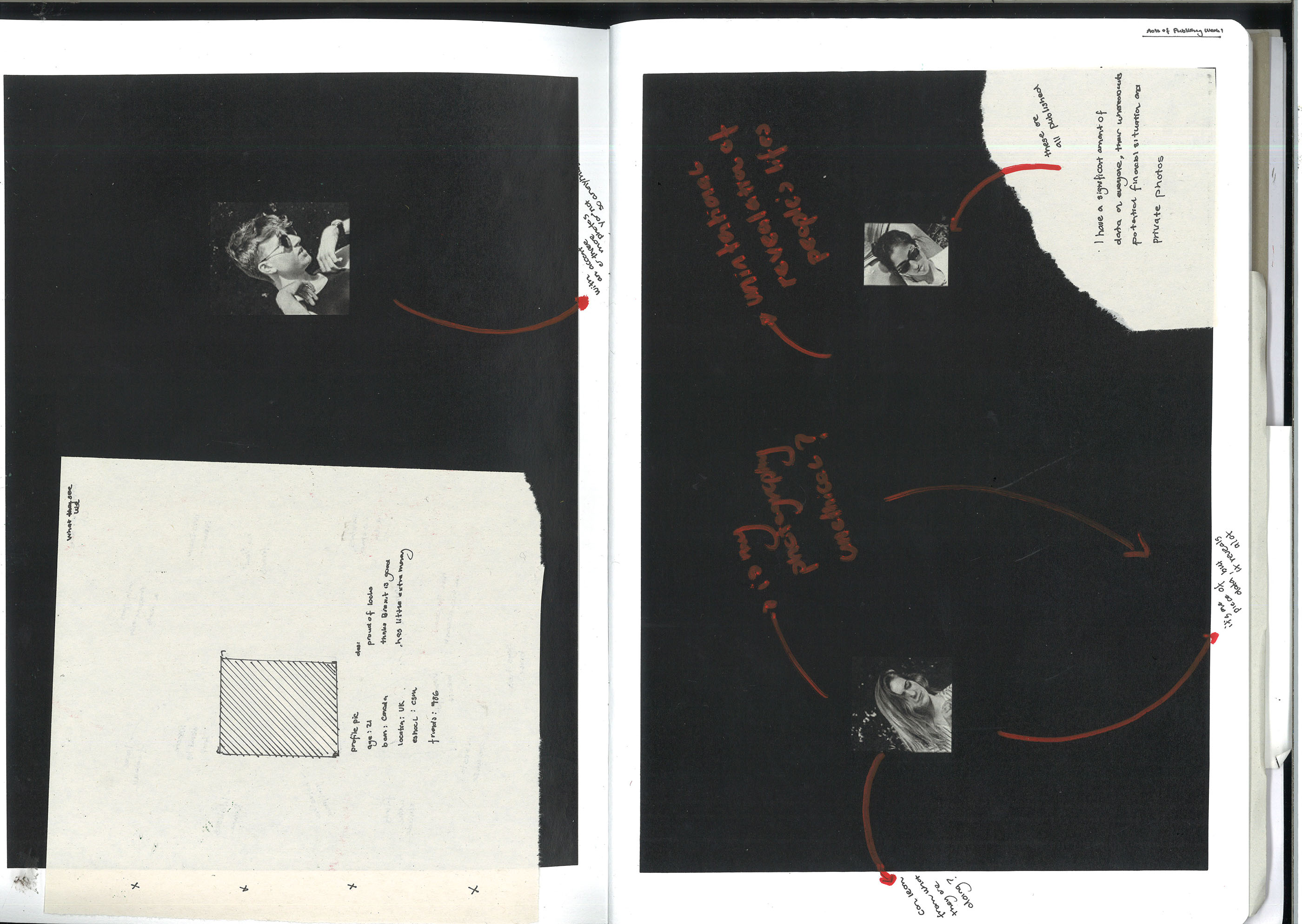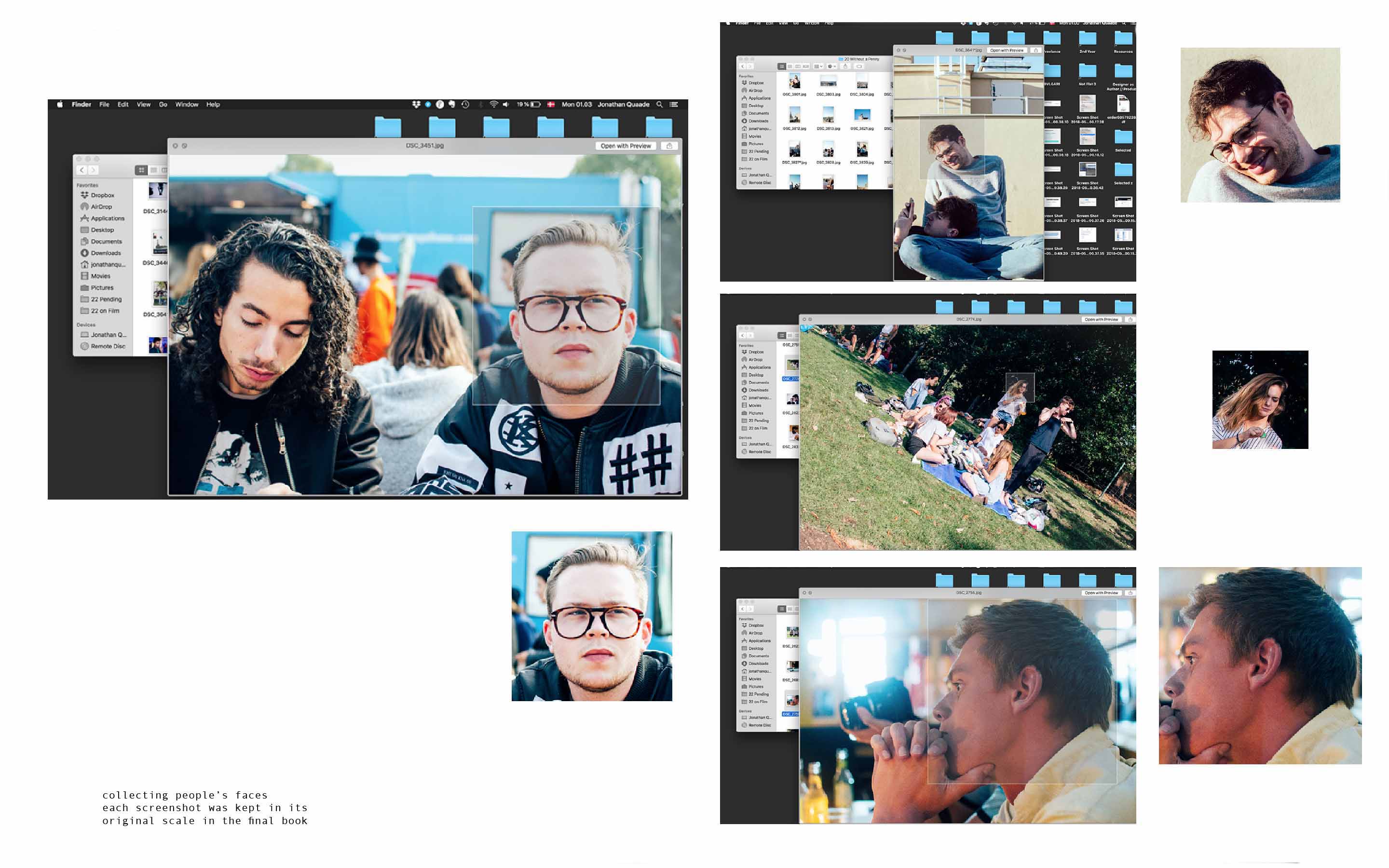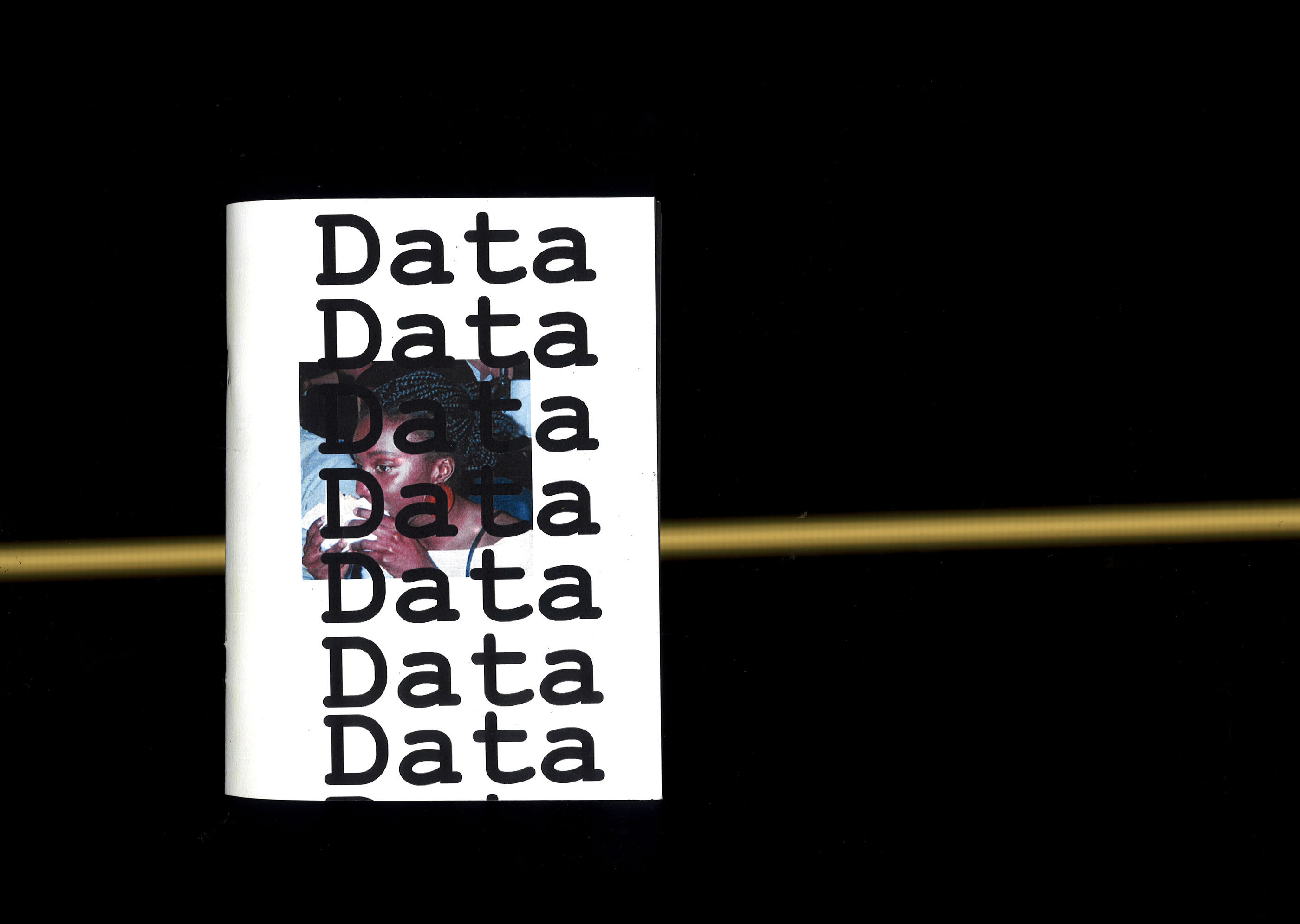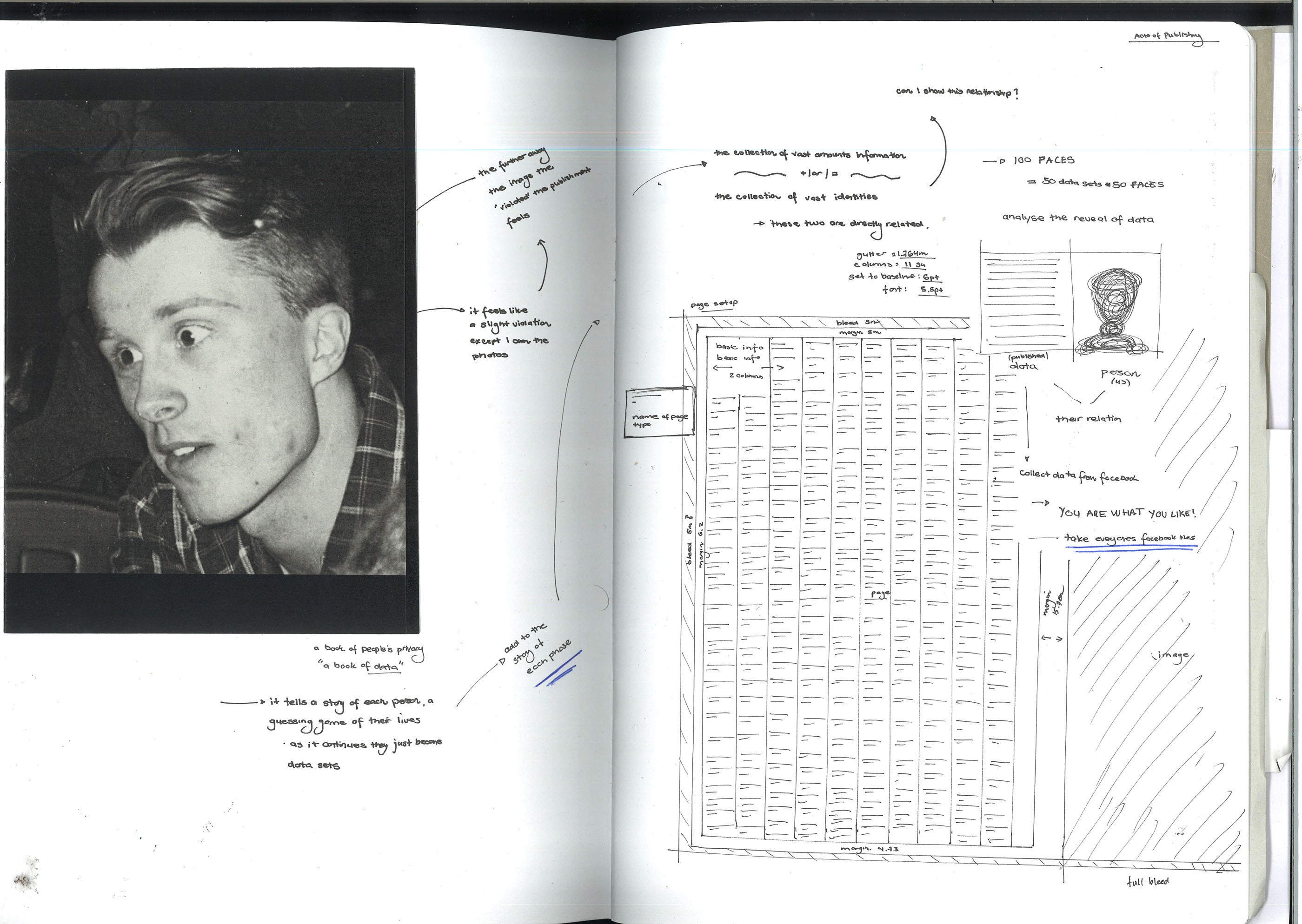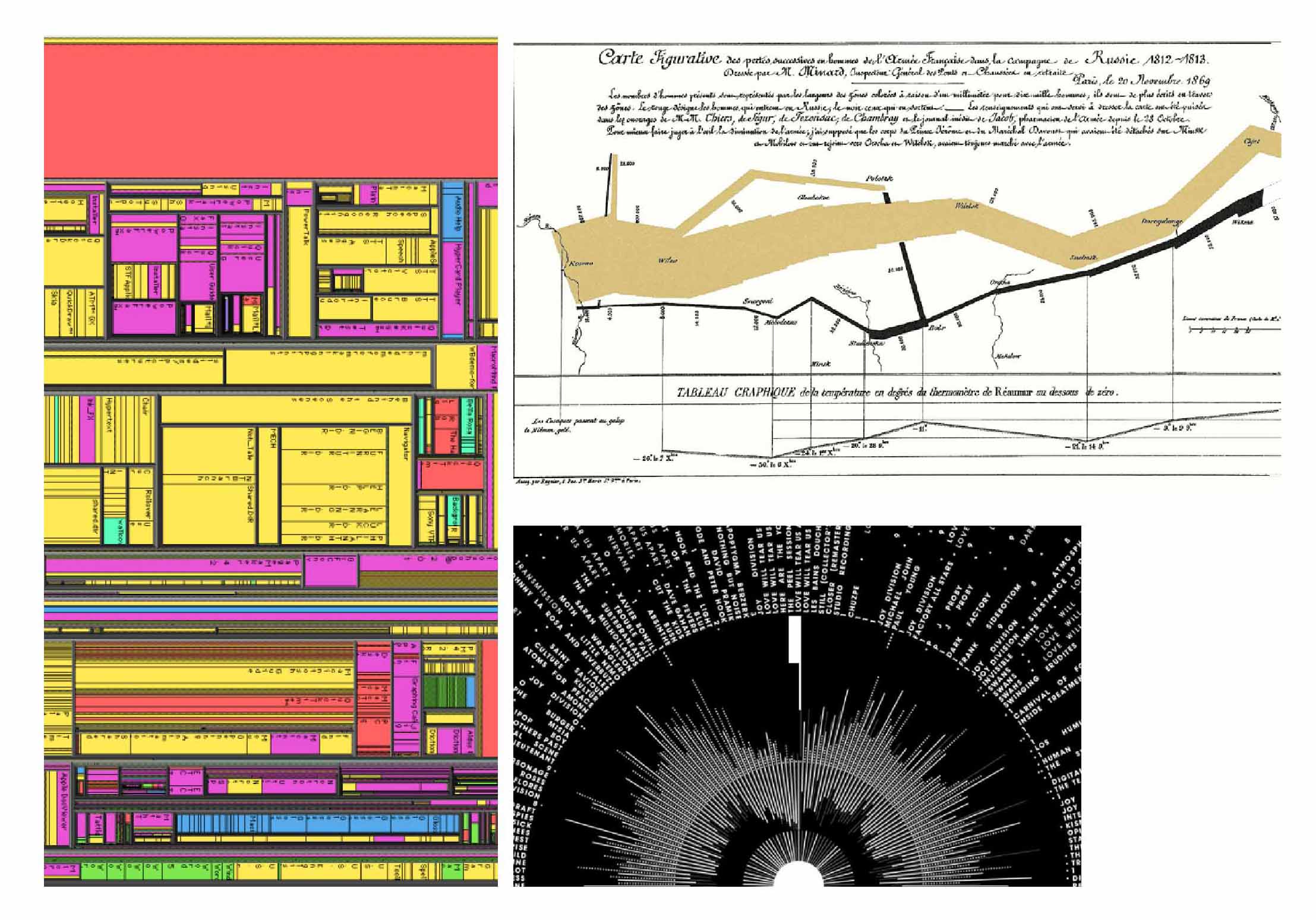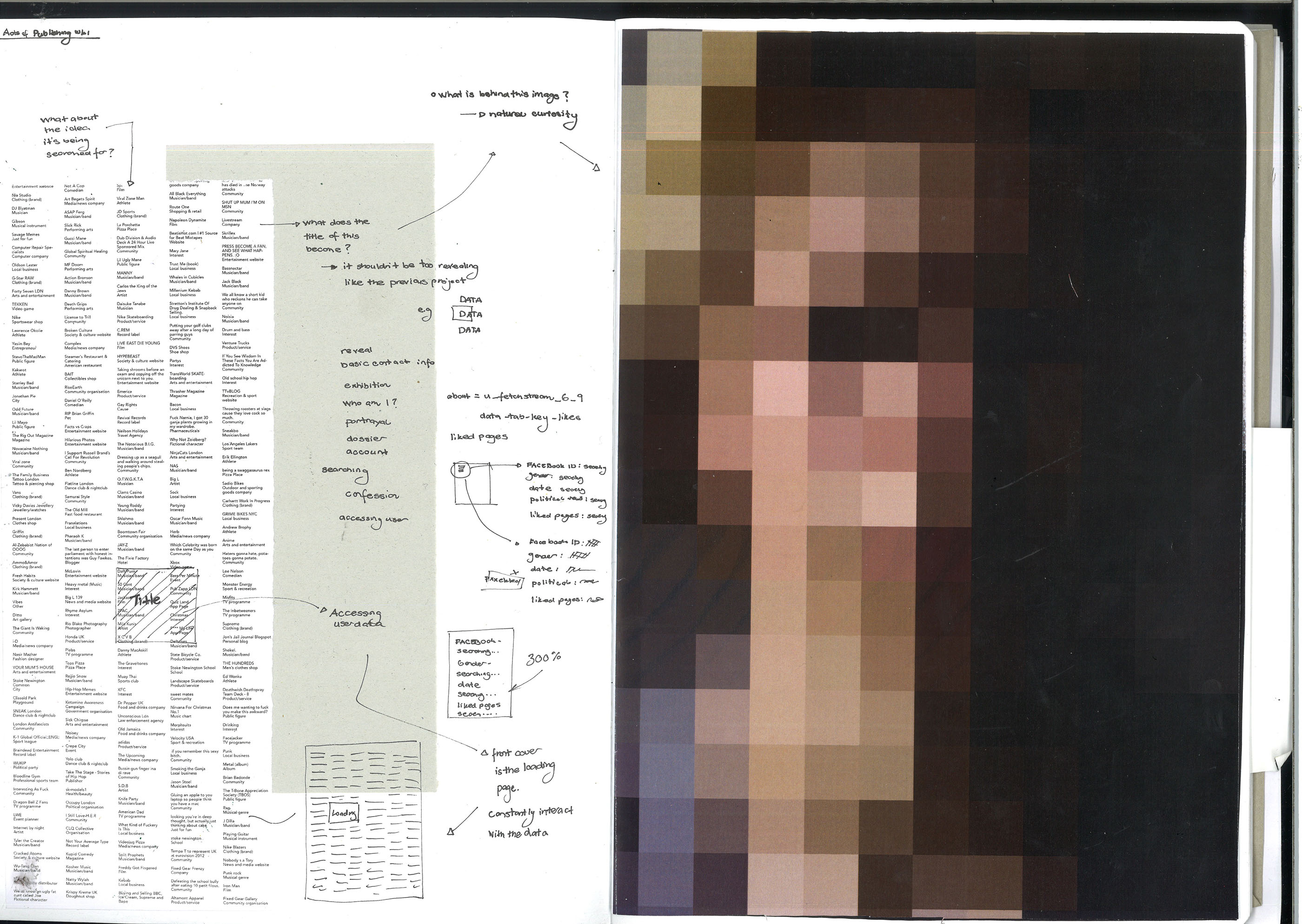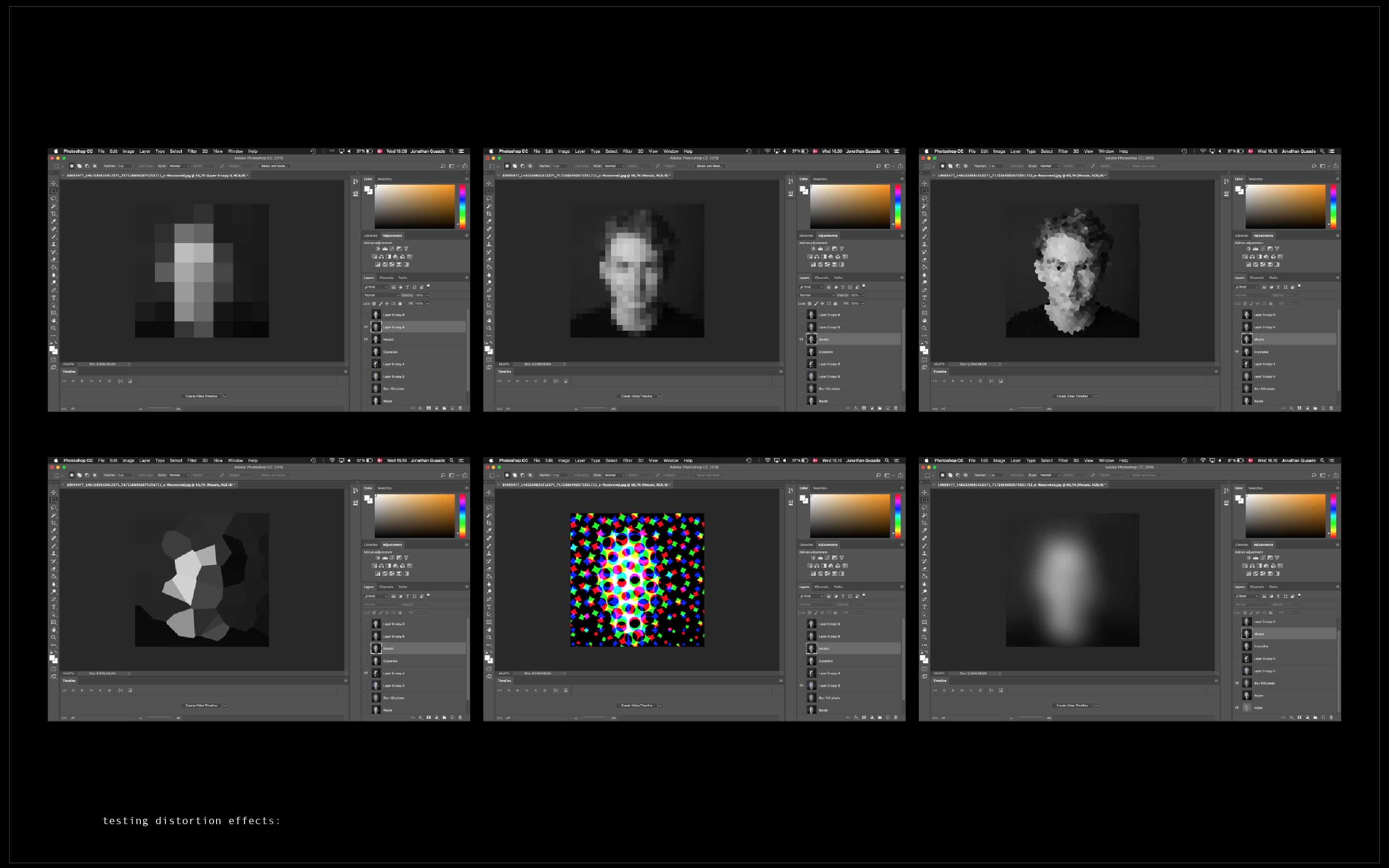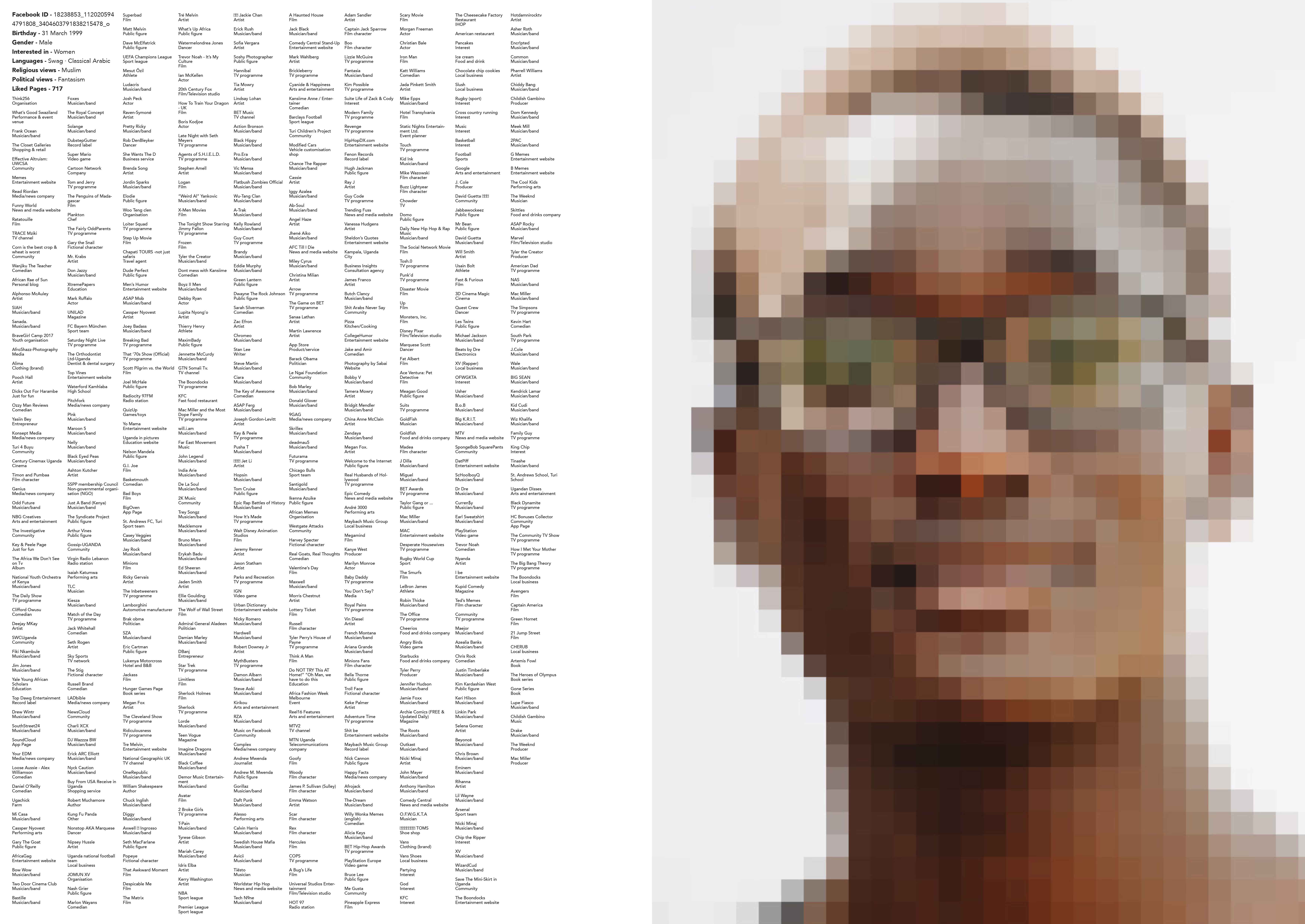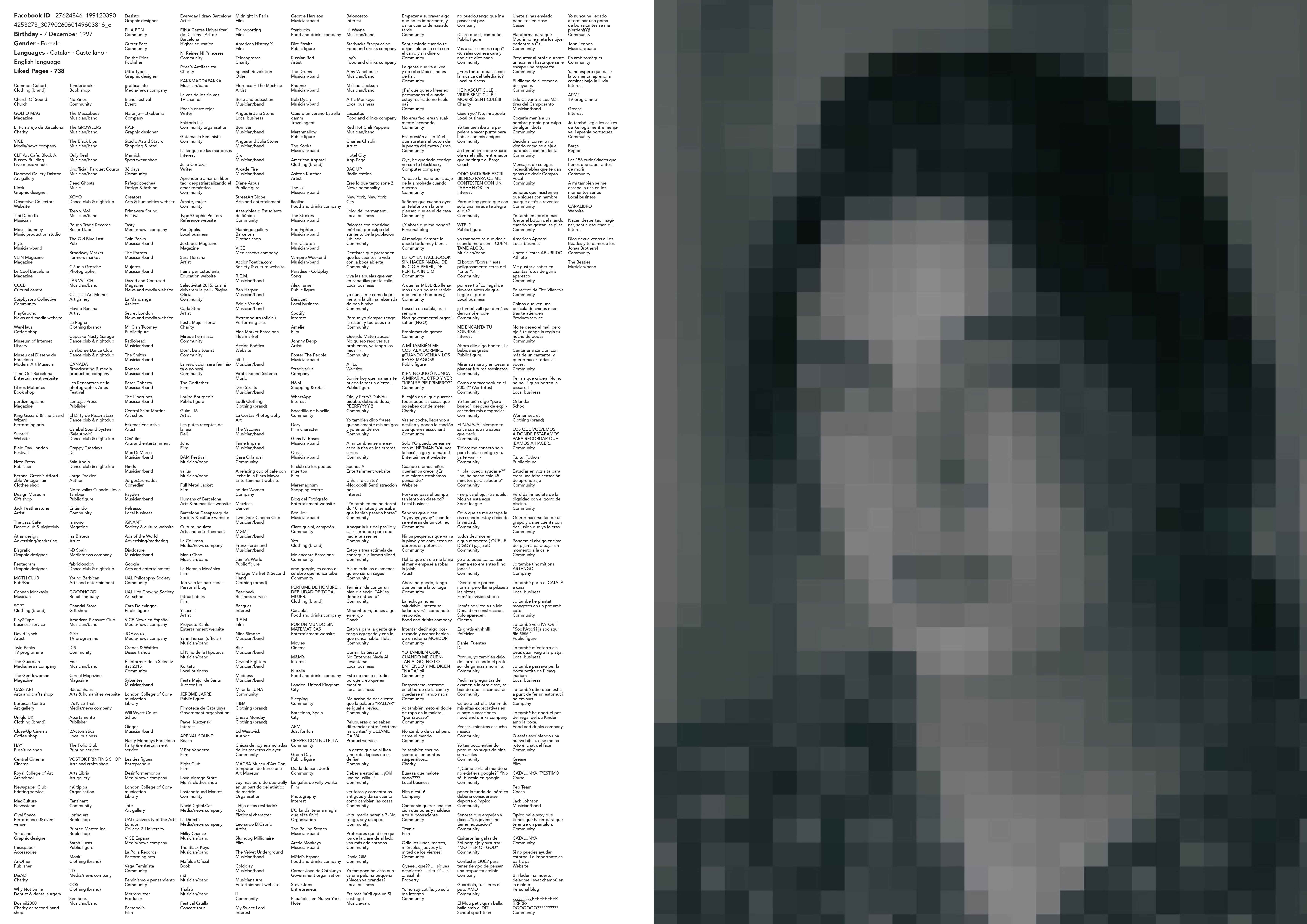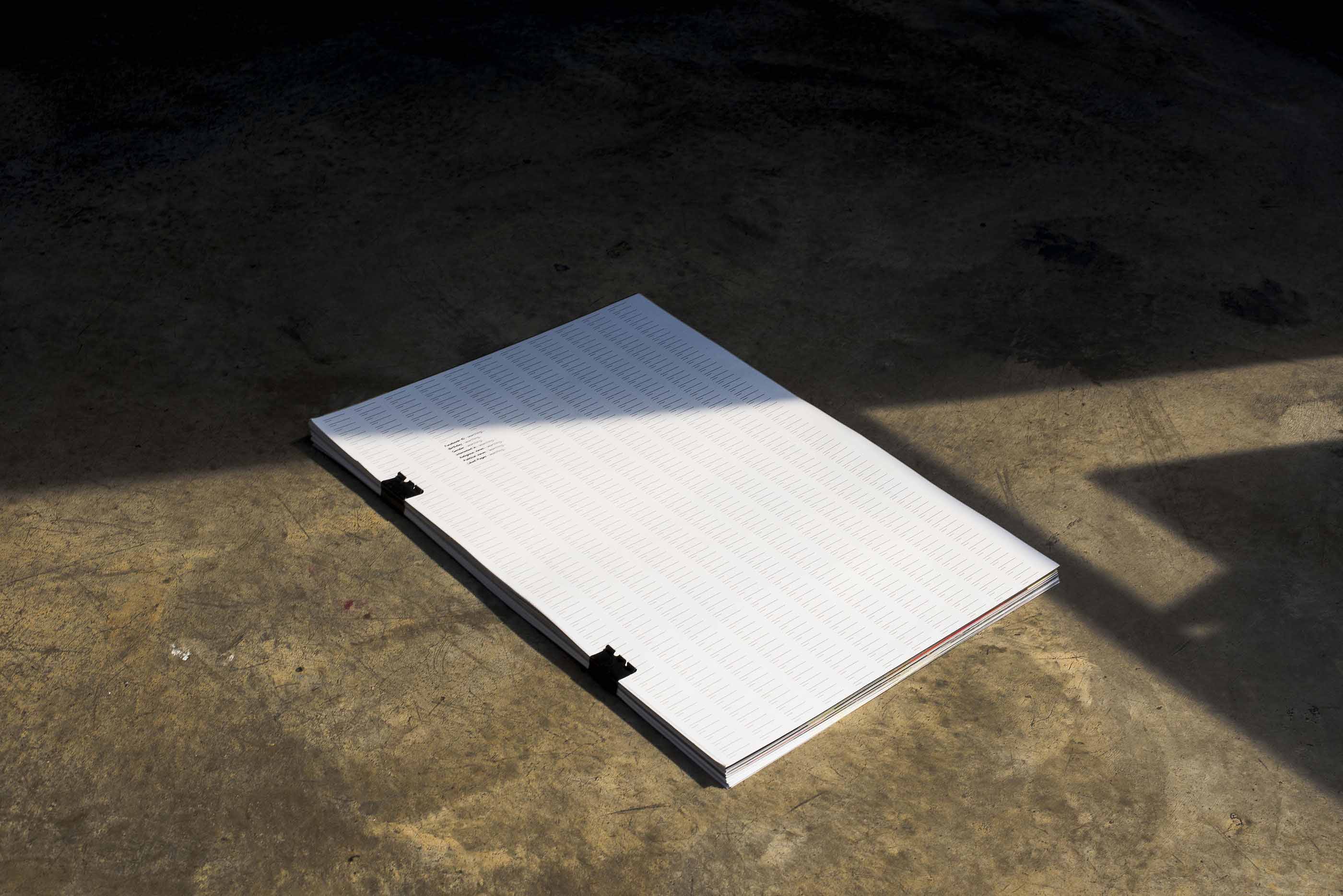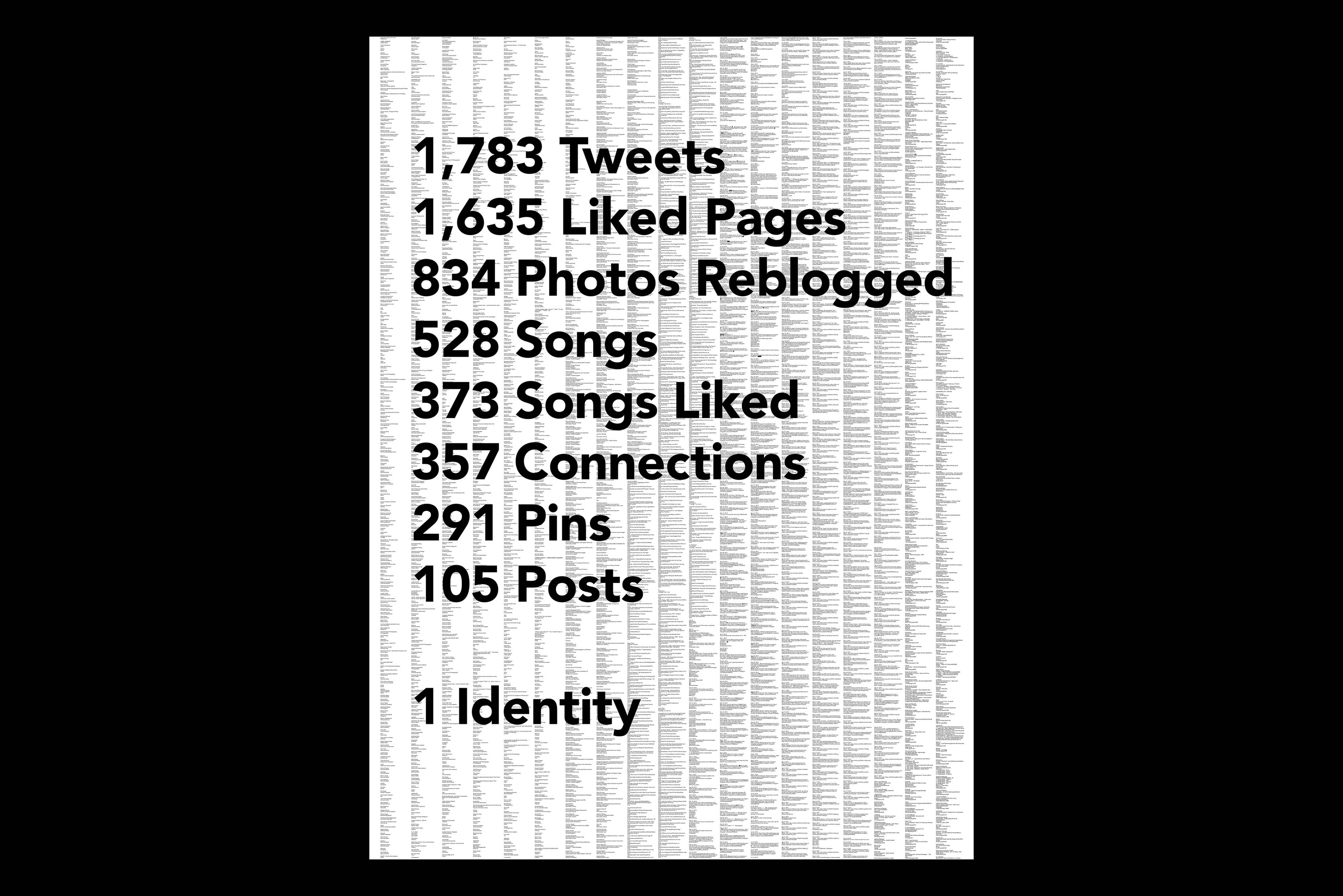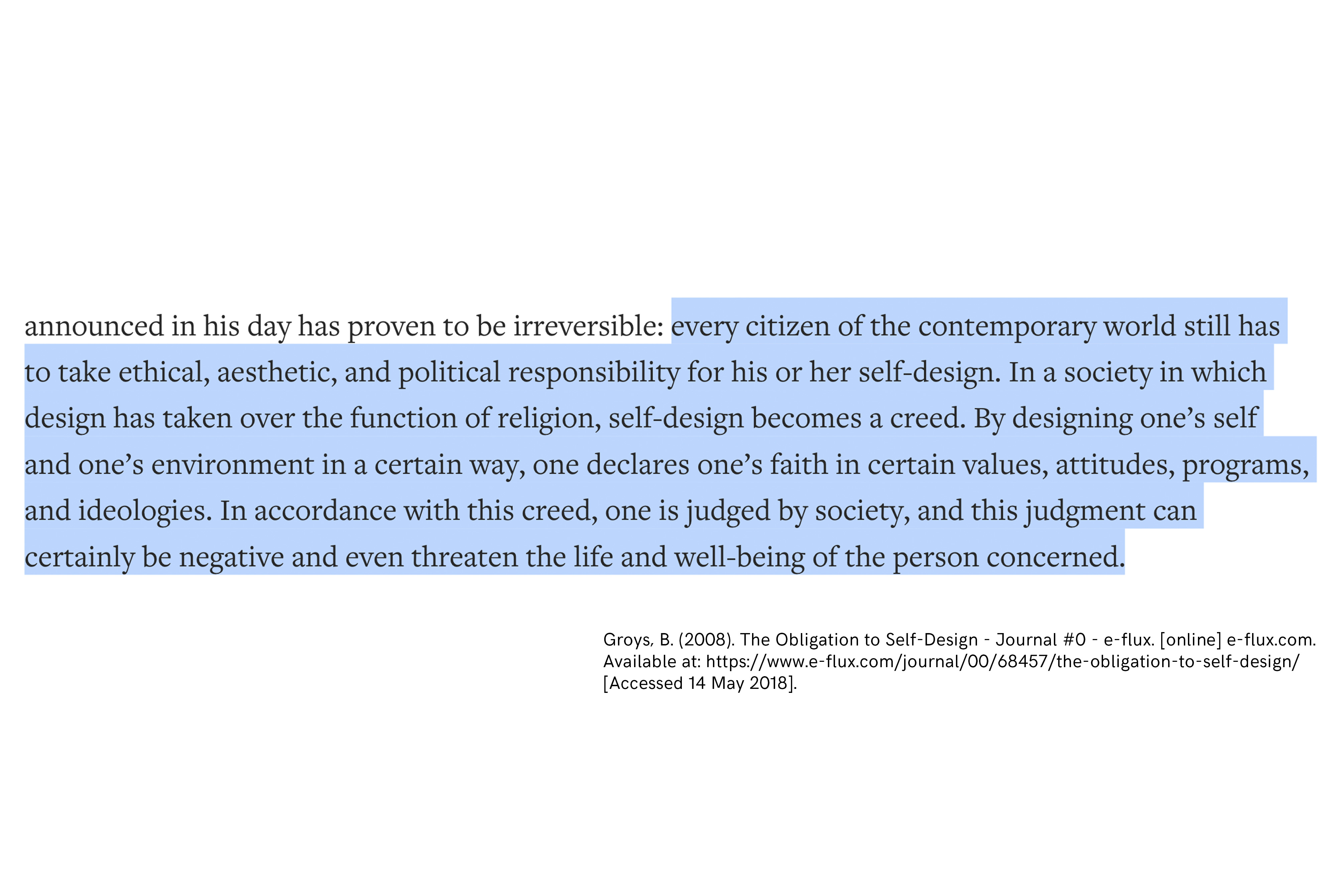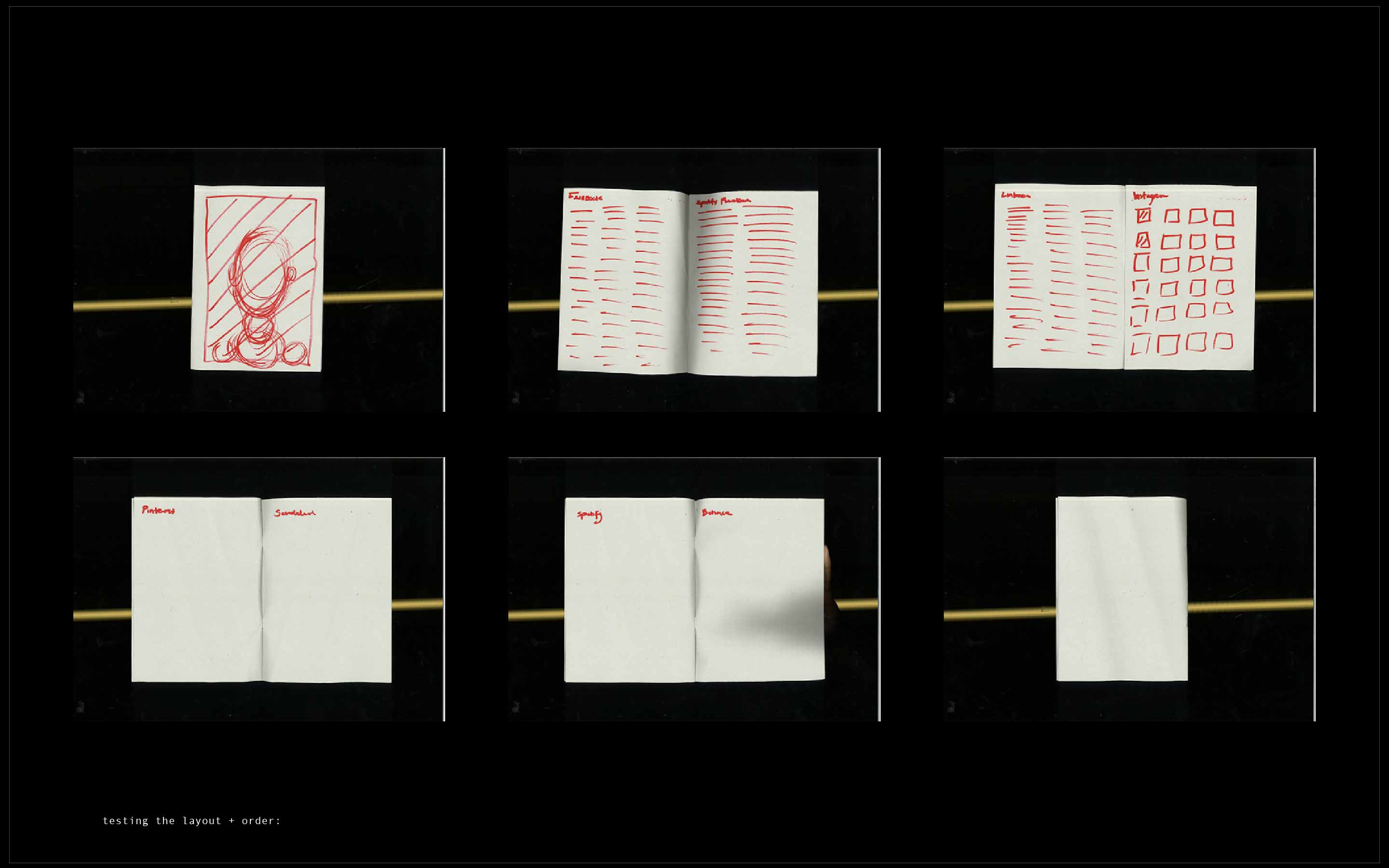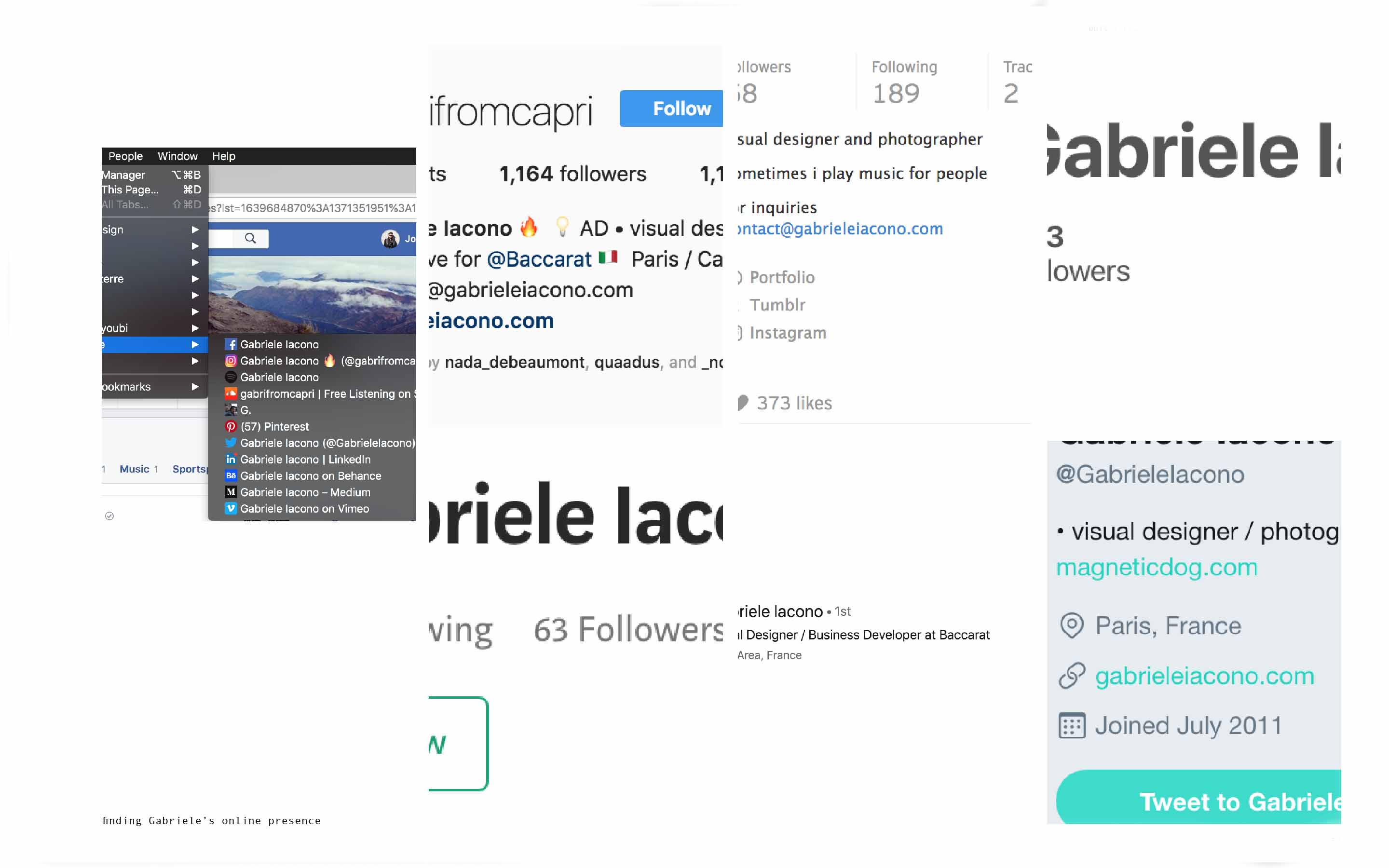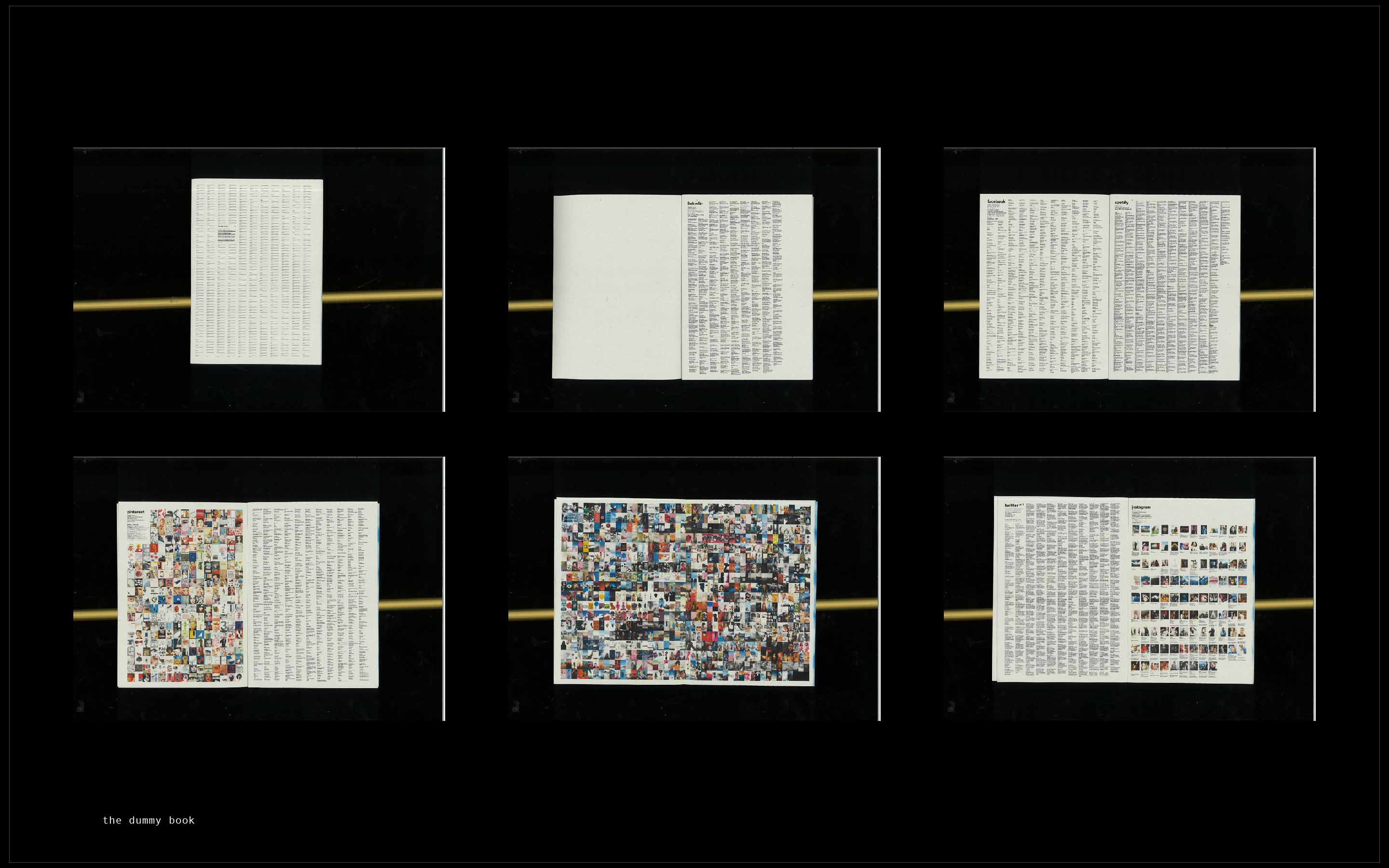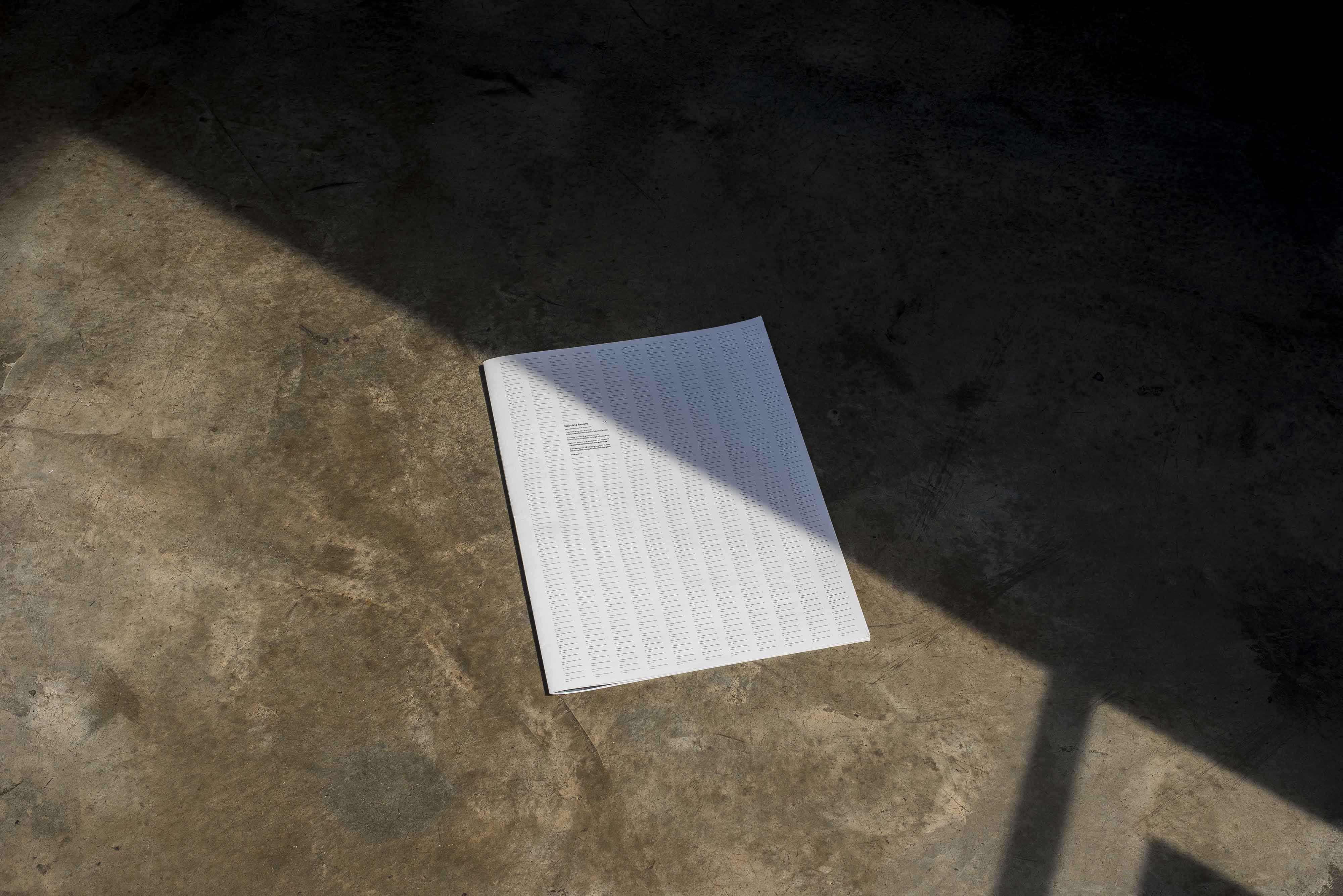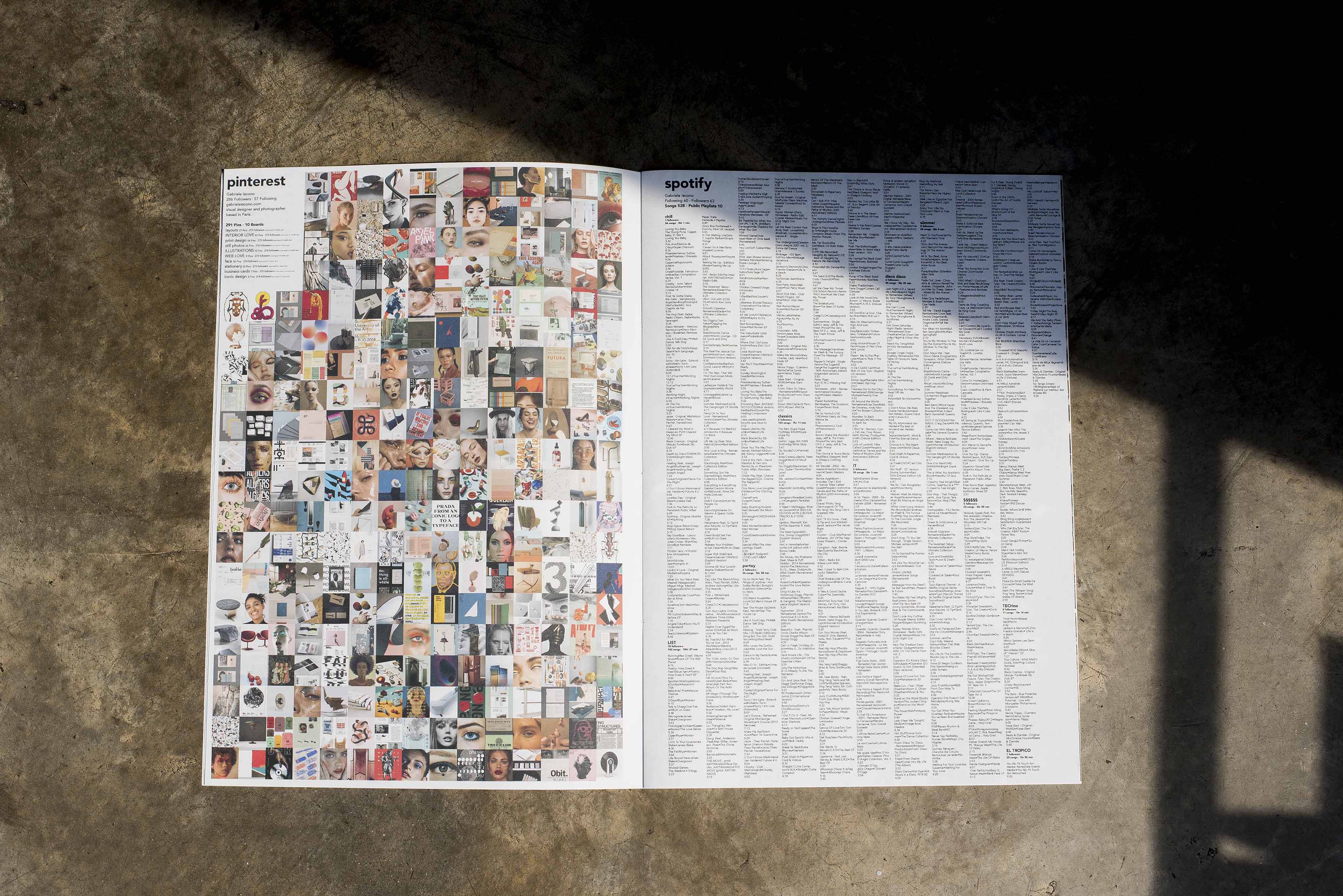
Paul Austin is the co-founder of one of the world’s leading design agencies, Made Thought, who stresses designers should shift from creating the design to causing good design. I met Paul in his beautiful studio, with his partner in crime Ben Parker working away on a current project behind us.
--Hi Paul.
Hi.
--Your studio, Made Thought, has a journal called TO THINK, which was created with 'the notion that we can, must and should take more time to consider and discuss the visual culture we create. For us, this is all about creating dialogue, as we believe conversation is a cultivating medium for deep thought; and we believe that deep thought is a prerequisite of both good decisions and great design.’
Let me ask you some questions that will hopefully propel you to TO THINK and do feel free to ask me any questions along the way… So, what frustrates you most about the graphic design industry/practice?
Interesting question. It is probably the term ‘graphic design’... Let's start there. What is the ‘graphic design industry’ these days? A few weeks ago, I was in Hong Kong as a judge for Hong Kong design awards and part of getting the most value out of me, I did a talk. On the opening slide of this talk it said in huge letters ‘The Graphic Design Studio is Dead’. There were a lot of shocked faces in the crowd. And then on my next slide, it said... ‘How Exciting!’ This ‘death’ a fairly recent change in the industry but I think it's fundamental.
I'm a trained formal graphic designer. Ben (Parker) is a trained formal graphic designer. We are both obsessed, or were obsessed, with the craft of graphic design as was the audience in Hong Kong. So when I told them that they didn’t have a job anymore, it was quite alarming. It was by no means saying that the craft is dead. If anything the craft is more alive than it’s ever been! Yet, it’s far more seamlessly integrated into our world. It started in the 1950s where you were a graphic artist and created posters, created leaflets and other very specific communication tasks. Now, everything we touch our phones and on our computers is a piece of typography. It’s a designed user-interface and a piece of print. Even getting into our cars you've got to navigate a computer screen. And all of these areas are representing a brand. So the term ‘graphic design’ feels limiting because the craft is so much broader. Communication design feels more relevant today in a broader world.
Something we try to pass this onto our team is when a brand or an organisation comes to us part of what they're asking is visual - the craft, the graphic design - but the intelligence that Made Thought brings is something outside of the visual. I would call it ‘behaviour’. How a brand, organisation or institution ‘behaves’ is inherently linked to their visual identity, but the brands' behaviour says as much these days about who they are and what they stand for as the colour palette they choose, the typeface they picked and the logo they have.
This is illustrated in a recent project that we've just completed for MoMA in New York. After we won the pitch and had been appointed I asked the director, ‘Why did you choose us?. He said, ‘It's really simple. There are two reasons (and that's outside of chemistry and us seeming up to the challenge to take on a very complex institution). The main difference you made to us was as much of what you said you would do as what you said you wouldn't do.’ This was obviously a pitch for a rebrand, but the first thing we had said was ‘We will not be giving you a new logo.’ Our justification was because we felt that from a behavioural standpoint it wasn't going to solve many of the issues of the strategy that had been conducted so far. What needed to change was their behaviour.
MoMa had received comments that people didn’t feel MoMA was for them, it was a bit elitist and austere. Things art institutions often suffer from. Our solve to Moma was: this is about how you act, this is about how you speak, the opinion you have and the way you engage your audience. In order to attract a young Afro-American from the Bronx who doesn’t feel there's anything from him at Moma, their behaviour had to change by breaking down the barriers and showing people the art they would find inspiring. You have to actually communicate to people and actually have an opinion. This wasn't a graphic design task. Graphic design was a tool within that task to signal a change in behaviour.
What I found rewarding was that we introduced a more open, warmer use of language, encouraging the museum to have an outward opinion. Because in the art world, apart from the curatorial decisions that are made, they never really engage the world with their view. If you saw a communication from galleries around the world you’ll see ’This is the artist. These are the dates. This is the website. Make your own decision’... But why? Even me as someone who is relatively art literate I'd still like to know why I should go. What am I going to get from going to see this show? How's it going to change my thinking etc? I might dismiss certain shows because no one's telling me why it would be inspiring.
Graphic design is the tool that gets that communication created. However, encouraging the people, brands and organisations we work with to ensure they're behaving in ways that will be compelling to their current audience and different audiences is as much of our job.
So to answer your question, what frustrates me about the graphic design industry? It is the term the ‘graphic design industry.’ Graphic design is a medium. It's not an answer.
--What are graphic designers’ responsibilities to the world? Socially, politically and environmentally? Is it just working with organisations/companies that try to improve the status quo, as you did with A Plastic Planet to fight supermarket plastic? Should graphic designers be doing more out of their own initiative?
100% yes! I'm sure there are lots of graphic designers and creatives that do but as a whole, as an industry, we are very responsible for a lot of the problems in the world. If we print something, it’s the papers we print on. If we create packaging, it's the materials we choose. It’s always creativity first. On-shelf appeal first. But at what point do we say, ‘We could... but should we?’ Let’s take the beauty world as an example. There are conventions that make it very difficult to persuade a client to do otherwise. So if we pushed to not use any foil stamping, the company would say ‘but how will our product shine and stand out on the shelf?’ However, one decision for one product times a million or unit in terms of impact do the maths, right?
--Right. It’s like how American Airlines decided to remove just one olive from their inflight salads. They saved almost $40,000 a year from that tiny decision.
Exactly, this is it! There are some brilliant stories out there. This is an anecdote, which is not necessarily related to graphic design, but it is a design problem and is where a designer or a creative and the small bits of thinking that we do is capable of big changes. At UPS, there was a computer programmer who came up with a proposal to reduce its carbon footprint. The driving rules in the U.S are so if you're turning right, you can flow straight down to the traffic. There is no obligation to give-way. If you turn left, you have to wait because you've got to go across the main traffic, unlike Britain where there's a give-way line where you have to stop and start, in America, it just flows.
So this computer programmer, rewrote all the route planning for UPS’ Sat Navs to take out as many left turns as possible. The journey might be longer but it would prioritize right-hand turns only. The fuel they saved and the carbon they reduced was phenomenal! Now that's a design decision which makes perfect sense. It really symbolizes how a small change can make a huge difference.
If I look back at some of our projects, some projects were made with beauty and aesthetics first. That might have been a start-up brand, which was small at the time. However, they've become huge. What was a ten thousand print run is now half a million times one hundred products. If I knew the scale at the time, would I have picked the materials and the processes that we chose? Definitely not. So a part of the designer checklist of parameters or informing factors relating to design solutions should be to think about being less wasteful. Not just recyclability but putting less into the circle, for example using as little packaging as possible.
There is a lot of great work being done to reduce plastics, but a lot of the problem starts with the designer, who decided that the product is going to go in a plastic bottle. There can be other options. It is our responsibility as graphic designers to consider being responsible. Choose some amazing recyclable paper of quality that for example, GF Smith has and then use it for the packaging! Which goes right back to brand behaviour which we talked about. Now your brand all of a sudden has an opinion. ‘We can stand for less waste which is why we decided to print on this.’ This thinking should fundamentally be built into the design process.
--At agIdeas in 2012, you said that brands have to brave, but shouldn’t we designers be brave as well? Why don’t graphic designers voice their opinions about the industry and the world around them more? Why don’t graphic designers criticize?
That comment was a hand-in-glove comment, asking our clients to be brave with us. I think it is the responsibility of any good design studio to show a level of bravery, a progressive spirit and a level of challenging conventions. But what defines a good design studio is the ability to encourage clients to go on that journey with them. It’s easy to show something that freaks them out. Encouraging them and communicating along that journey to give them the confidence to actually take that risk is much harder. Convincing brands, to actually understand why it's a good idea and not a potentially damaging idea, that is actually was sets design studios together apart from each other.
--Right that’s in relation to graphic designer clients but if we look more individually, you're the only major studio (that I’m aware of) that has gone out on your own to talk or make something that talks about certain problems publically in a direct comment to the world.
Yes. Ben was very much the pioneer of the Made Thought publication you are referring to, and it was a distinct reaction to the image obsession that we live in at the moment. So much is judged on Instagram. We all know how easy it is to make something look good on Instagram. I'm not saying that a lot of designers who are hiding behind the images they create… but there are a lot of designers who are hiding the images they create! [Laughs]
There are fewer and fewer platforms for the design industry to actually communicate the intellectual, not even deep-seated intellectual, thinking behind their work. There are very few outlets for designers to convey their thinking. Lots of outlets featuring certain studios would have a preface often written by a third party about that studio; about their thinking, about what’s important to them and maybe an interview with the founders. There are fewer mediums that deal with that. Instagram is just image. Where do you get the chance to have a voice?
--But isn't up to the graphic designer to voice about issues, especially those that we have so much influence upon? Let's say you want more thinking in the industries, is it not up to you to write the op-ed and put it on Instagram, put online, put it out there for people to see?
Yeah, that's the thing… but I don't know if that will work. If I look at the millennial generation, they are all image obsessed. A lot of the problems with social media is about people being more afraid to voice their views for a fear of being trolled or being completely lambasted. So people don't say anything. They just show pretty pictures. A true designer or a true creative that really has conviction in why they're doing the work that they're doing should have the courage and the strength of stand up and say this is what I do. I don't care if you don't like it!
But we're obsessed with being liked from an image perspective.
In regards to TO THINK. Our publication was born out of two things. First, we just wanted something physical and actually have people read it. To actually encourage people to stop for a second. Hence we have not published or put it online at all. It was also a really good vehicle because obviously everyone was our clients. So it became a really interesting way of actually engaging some of the clients we work with each other. And then all of a sudden you've got someone like Tom Dickson talking to Frederic Marre. One is a really crazy French perfumer and the other is a British design hero, and having them both answering our question on the same level was fascinating but also quite inspiring. And that's a conversation that never would have happened if TO THINK hadn’t been born.
Maybe it's a good vehicle just to simply to get people talking to each other. It’s very easy just to presume that someone like Frederic Marre is just all about fragrance and that’s all he thinks about. But he is an absolute oracle about cinema and how he thinks in film. And would you have ever have got that if you didn’t engage people with a conversation?
Part of what we do and that's kind of one outlet for it with all our clients, which sounds cheesy, but we've always said that ‘We work with our clients, not for them’. Now that's actually a very simple statement but the fabric of that statement is actually really important.
When you work with someone it encourages debate. You get know them very well, you really understand what makes them tick and then you respond to that. Working for someone is a simple instructional message ‘Do this for me.’ ‘Yes sir, I'll do it.’ Fundamentally there's a nuance between for and with that shapes the way that you work together. That’s why we've had very long-term clients. Stella McCartney. We’ve worked with her for over 12 years. Design Miami. We created the brand from scratch 2006 and we’ve done two shows a year ever since. GF Smith, the paper company, we’ve been with them for seven years. That comes out of not just delivering good work but engaging them in an unfinished conversation. Design is an unfinished conversation. You do the best work you can do for that moment. There are distinct evolutions that can be made in any design relationship, look at the initial work we did for Design Miami in 2006 to today. We are in continuous conversation. The minute you become boring they want to talk to someone else.
--What concerns you most about technology (social media, big tech, data collection, surveillance) right now as a designer?
I’m on the fence on with that one. It's a really interesting question and I can't help but respond to it personally as well as professionally. I've always been an advocate of technology. I've always been obsessed with newness. Technology has obviously fundamentally transformed the design industry over the last 20 years and also the way we communicate: the speed, the efficiency. There are lots of pluses to it. But then what does that also do? It makes people's expectations far more immediate. The speed that people might give you to respond to a creative challenge, to answer an email, to deliver it encourages an almost frantic pace. Where certain things, especially concerning craft which means coming up with an idea that has longevity, should always be as quick as you can reply to an email. Technology has fundamentally enriched the possibilities of design but the speed of technology has encouraged a complete lack of patience within the world.
This expectation of immediacy is a bad thing. I've got a 14-year-old son. So the constant challenge of trying to pry his phone out of his hands and get to look up into the real world is also pressing at me from a social perspective. I’m really trying to make him realize that the phone is not at the epicentre of his the universe. So there are personal and professional wrangles there. But actually, without it, we would all be fucked. But with it, we’re also fucked! (Laughs).
It's not going away. Again, it's the responsibility that we use it for what it can bring but not letting it rule our lives. We know that particularly as business owners because your life quickly gets ruled by emails. You start spending more time responding to emails than doing design work, which I’m not sure is what I studied for [Laughs]. But at the same time without, we'd be handcuffed, so it's a fascinating debate. What do I know technology is not a replacement for... is creative thinking? It won’t ever replace that.
--Like you’ve said in TO THINK, we live in an age where everything is about short-termism. Just to name one issue, in the not too distant future, we will live in a world where machines can make decisions we cannot understand or follow, and the systems can be used against us. People are already changing their physical to match their online avatars and social media usage is disrupting elections and causing increased mental health in children. How can the graphic designer go about addressing short-termism so we don’t stumble into an unwanted future?
Oh, that is a big question!
[Ben Parker]: You’re actually touching on issue two of TO THINK with that question.
Yes, the second issue of To Think is about thinking long term. There are two sides to your question. One of them is deep-seated around the idea of vanity and appearance but I don't think graphic designers are ever going to really change that. There's a far deeper cultural issue, where people start believing who they are online rather than who they are offline. I would love to think that it is a fad but I'm not sure.
Two from a short-termism perspective, there are fewer ways. I think there is a backlash against short-termism. It's not really coming from graphic design at the moment but from not similar industries. For example, furniture and the music industry, where there is an increased desire for craft, for objects with substance and feeling that there has been a human involved and the precious quality of human involvement. I believe I read that in the UK vinyl sales are at 25-year high whilst the sale of CDs fell by 45%. CD’s have been replaced by downloads. Tangible music, which was the premise of the CD, is being replaced on the other side by vinyl. People like the tangible and so in some areas there shift towards the tangible.
Another example is directly linked to graphic design which we are seeing with a lot of clients, is the request to print things... It's going up. Why? You could use the music industry's direct comparison. In the eighties when synthesized music was a big thing when everyone could play the guitar on a keyboard. The reaction was thinking it was a disaster and that real music was dead. In fact, it was just a novelty and synthesised music later found its equal place alongside analogue music. I think it is the same within graphic design. Not that long ago companies had no option but to print things that lasted a lot of time. That was just the nature of the beast. Yes, you could do a leaflet and it would get thrown away but generally speaking print was physical so it has a greater permanence than digital communication. Then this thing called email came along and these things called websites and no longer do you have to print communication, you can just create a website. I'm sure there are figures that show that print took a nosedive.
What I see now is actually people taking stock saying ‘What is the most appropriate medium for this message?’ rather than just assuming that everything can be done digitally and nothing gets printed. What we are seeing is our clients noticing that in order to actually make people notice it, experience it, remember it, keep it... you print it. Everything else can be digital. So suddenly print has been elevated to vinyl status. If a fashion brand wants to make something impress someone, they might make a film through Instagram and it's cool and it lasts a couple of days. Yet, if you give them a tangible piece it might end up on the coffee table far longer than that email or that Instagram film.
I'd like to think there’s a balancing of the scales. So the things that we want to last should be physical (that's why TO THINK was printed) and the things we want to be ephemeral and would be a waste of resource it would more responsible to make it digital. The designer can guide. It can't make the final decision because that tends to be with the institution. However, we can use that balance of digital and physical as a sense check. To consider the lifespan of things and whether it is something that really we'd like people to actually notice and keep.
It all comes down to smart thinking! Don't just instantly go to what is the convention or what you always do. Just stop take a breath to think, ‘Okay... before I do this is this the right direction?’ And that can be physical, it can be the formats we use. We’re so lucky now as graphic designers - you've got moving image, you've got audio, you've got online, you've got print, you've got experiential. You’ve got all of these channels that you can amplify and play up or down. Just a little bit of consideration, and dare I say pause, to just make those smart decisions, I think that’s where design becomes more powerful.
Great answer! Is there anything you want to ask me?
I’ve got one. So you're obviously the end of your studies…
--Getting there!.. (Laughs)
[Laughs] Right, getting there...What excites and engages you about the opportunities of being a designer?
--That’s a very good question… Not too long before doing my first of these interviews I had a slightly pessimistic view of my future. I was looking for where my power and my potential to influence lies, which is not something unique to me. And unfortunately, graphic design can have this impression of being a cog in a machine that just churns out stuff, which I had certain apprehension against as you want to fight global warming and the worlds other big problem. I was wondering if graphic design was the right path.
However, as I was doing these interviews I see there's a lot of areas where I have the ability to influence that I hadn't considered. For example, both you and Chris Moody (from Wolff Olins) talked about having long term relationships with clients and being able to speak to them, engage in conversation and discuss new ways of doing things.
The best thing about graphic design and why I love it is that it is one of the few industries that touches everything. If you want to be engaged with technology, you can go work in that industry or if you help the environment you can go to work there. And not only that, we all have the tools to initiate projects, companies, movements ourselves! Most people can’t publish their own book, and create their own website and change the behaviour of a brand. And so, it’s incredibly exciting that there is no end to the horizon for me as a designer!
On another note, the designers I have interviewed really want to engage with technology. You and others don’t express the fear that I see almost everywhere else. You firstly express recognition and willingness to engage with all of the amazing opportunities that technology brings, but then saying ‘Yes, of course. We should be careful about x, y, z.’ So the optimism and reverence of technology from leading graphic designers is super exciting to see.
For me, the alarming part of your answer was this sense of pessimism with your generation.
--I think it is a question of where do we put ourselves? We want to be responsible and unfortunately, sometimes graphic design doesn't always seem like right or most powerful avenue to do that.
That's completely unfounded… First, you're living in what is at the very epicentre of the creative universe right, and the opportunities there are endless. You can do and you can be whatever you want to be. The only thing that can limit that is you.
This is my biggest frustration with the younger design world of wanting it all immediately. ‘I'm an art director’. No, you’re not. You're ten minutes out of college. That’s something you’ve got to earn through really hard work, absolute ambition and enthusiasm and not expecting it to be delivered on a plate. Actually, work for it! People, you know, quote the ‘millennial’ view on the world and them feeling so entitled. For me it doesn't matter what generation you’re from nothing replaces motivation, nothing replaces an ambition to create. If you have the ambition to create you will find your channel, you will find the place that works for you. It might not be this studio. It could be a much more corporate one or a much smaller one. The ability to change things within any of those environments is immense.
--The pessimistic view was something I had been going through. But my energy has been super revitalised, especially as my course shows and allows me to create whatever I want and that my creative practice is whatever I want it to be.
Yeah exactly!
--It's super motivating! And on top of that, I am even able to engage with top creatives like yourself and Ben who take the time to talk to me about the topics that I want to see discussed more in the industry…
Yes, you must be filled with nothing but excitement! It’s not like you're working in the finance industry that's struggling on a daily basis. This is a buoyant industry. Brand and organisations regardless of what they do functionally, whether they are a finance company or a theatre or a music label they all rely on creativity to make them stand out. If you did want to follow a more social kind route, responsibility-wise, in the likes of A Plastic Planet, even right down to the most important charitable work relies on creativity to get people to notice it. There is no boundary to where you can't apply your skills.
But the malaise of your generation of it being dark out there is too much. It's always been dark out there! When we graduated it was in the middle of a recession. It was dark then. It was just different. You’ve got run into the storm not away from it. That’s something that doesn’t get instilled in people in the educational system. It won't be there waiting for you on a plate ready. You've got go out there, really want it, chase it down and then when you do get the opportunity to make a change fucking take it and make it count! Do that a couple of times you’ll be absolutely flying!
That’s all that we ask from the guys here. There is nothing worse than apathy. ‘I'm just here to do stuff.’ No, you’re here to make yourself a better designer. If you don't want to make yourself a better designer then don't be here. Ben’s and I’s role is to encourage that. ‘Don't do it for me. Do it for you. Because if you do it for you, the work will better and that will benefit me and the people we work for. I won’t even need to ask you to work late on it because you’ll want to craft it and own it.’ It is a responsibility of us to make sure we create environments that allow that. But also the buck doesn't stop there. It has to be inside the people that come in each year, particularly at the graduate level. They’ve got to want to impress themselves and that will impress us.
--What I realised is that I didn’t know where to place myself. And I’ve just found that there are so many more exciting opportunities than I initially thought.
Yes, you’re in one of the richest environments (and I don’t mean financially). The creative world. One of the things that technology does allow is that you could be a filmmaker tomorrow or a musician. The creative world is whatever you want it to be!
--Amazing. Thank you so much, Paul.
No problem.
☰
Madethought.com. (2018). TO THINK DEEPER | Made Thought. [online] Available at: https://www.madethought.com/to-think/journal/deeper/ [Accessed 8 Dec. 2018].
Madethought.com. (2018). THE MUSEUM OF MODERN ART | Made Thought. [online] Available at: https://www.madethought.com/to-make/moma/ [Accessed 11 Feb. 2019].
Baines, J. (2018). Made Thought’s latest installation imagines a plastic-free supermarket aisle. [online] It's Nice That. Available at: https://www.itsnicethat.com/news/made-thought-plastic-free-aisle-product-design-120918 [Accessed 6 Jan. 2019].
Vetter, M. (2015). The $40,000 Olive: How Entrepreneurs Can Spend Time Saving Money. [online] Forbes.com. Available at: https://www.forbes.com/sites/moiravetter/2015/06/04/the-40000-olive-how-entrepreneurs-can-spend-time-saving-money/#687224f55fbb [Accessed 18 Jan. 2019].
Prisco, J. (2017). Why UPS trucks never turn left. [online] CNN. Available at: https://edition.cnn.com/2017/02/16/world/ups-trucks-no-left-turns/index.html [Accessed 11 Feb. 2019].
Ideas on Design (2014). Made Thought talks about that one simple thing - agIdeas 2012. [image] Available at: https://www.youtube.com/watch?v=ZGLRAH_G1Cs [Accessed 9 Dec. 2018].
Davies, A. (2018). People are getting surgery to look like their Snapchat selfies - BBC Three. [online] BBC Three. Available at: https://www.bbc.co.uk/bbcthree/article/9ca4f7c6-d2c3-4e25-862c-03aed9ec1082 [Accessed 11 Nov. 2018].
Savage, M. (2017). UK vinyl sales reach 25-year high. [online] BBC News. Available at: https://www.bbc.co.uk/news/entertainment-arts-38487837 [Accessed 11 Feb. 2019].
Baines, J. (2018). Made Thought’s latest installation imagines a plastic-free supermarket aisle. [online] It's Nice That. Available at: https://www.itsnicethat.com/news/made-thought-plastic-free-aisle-product-design-120918 [Accessed 6 Jan. 2019].
